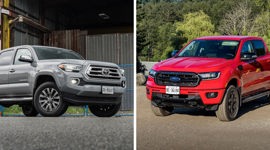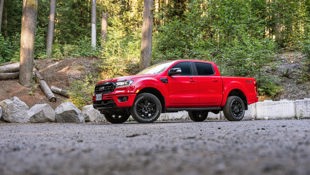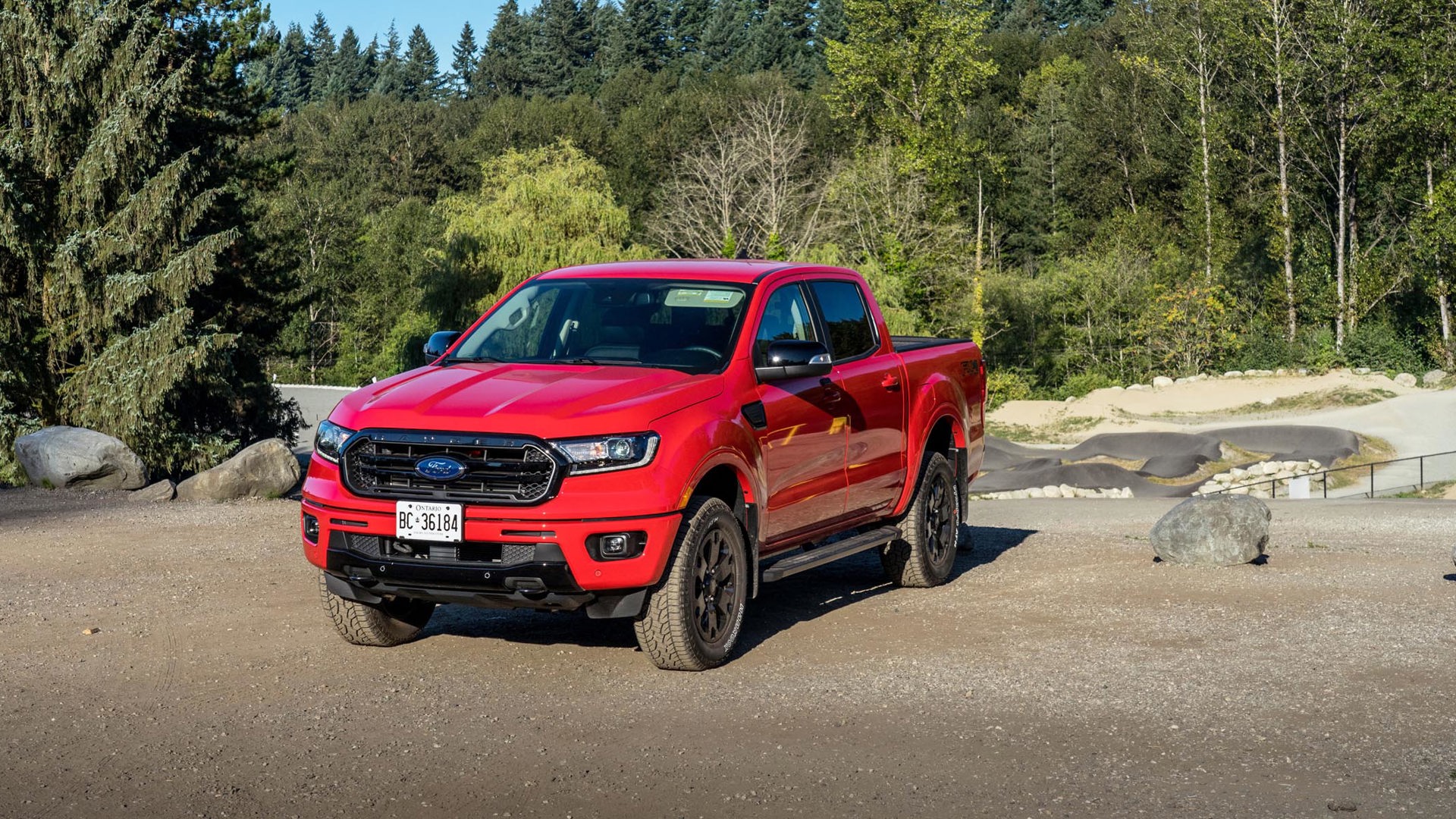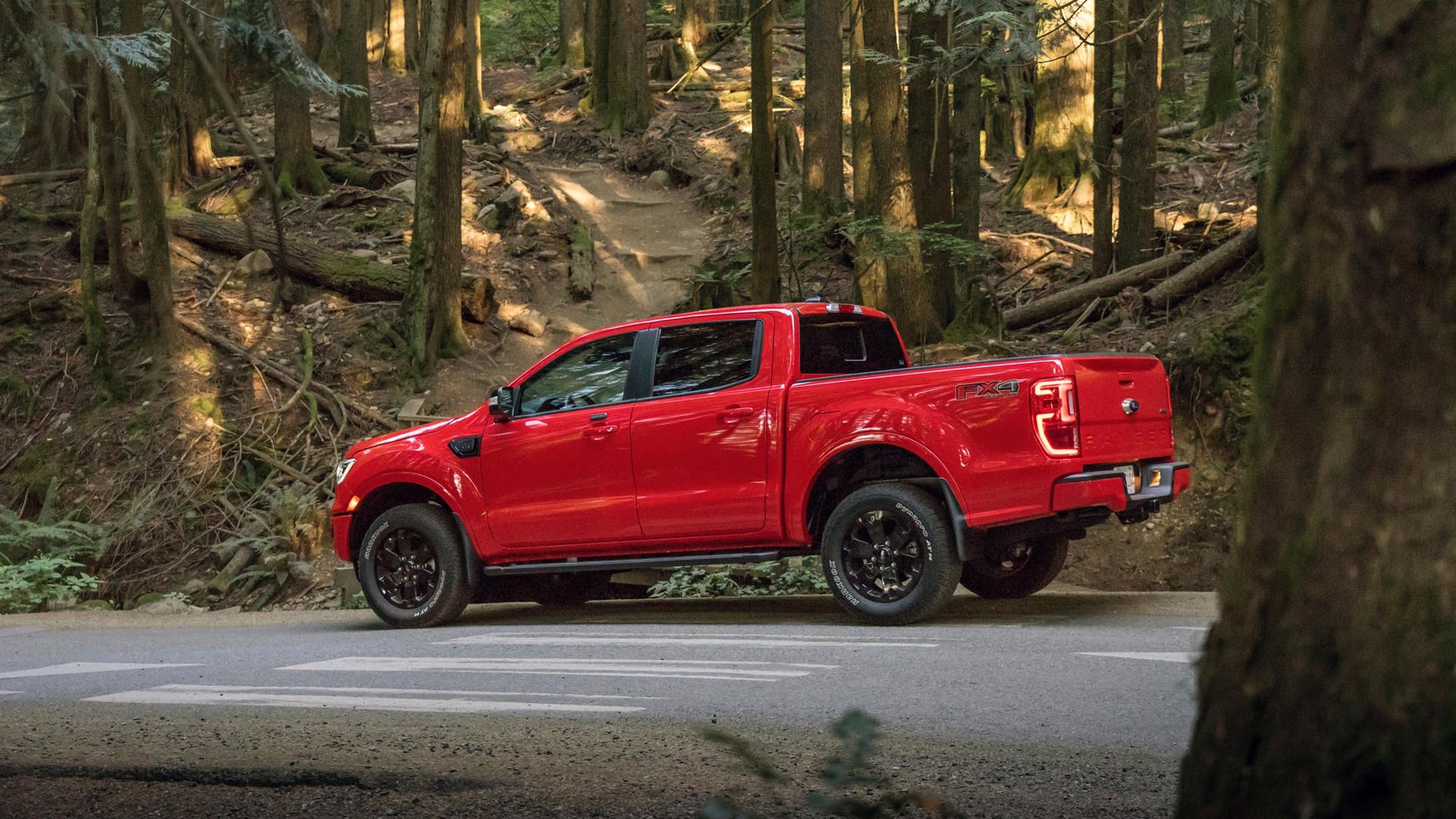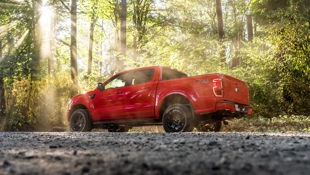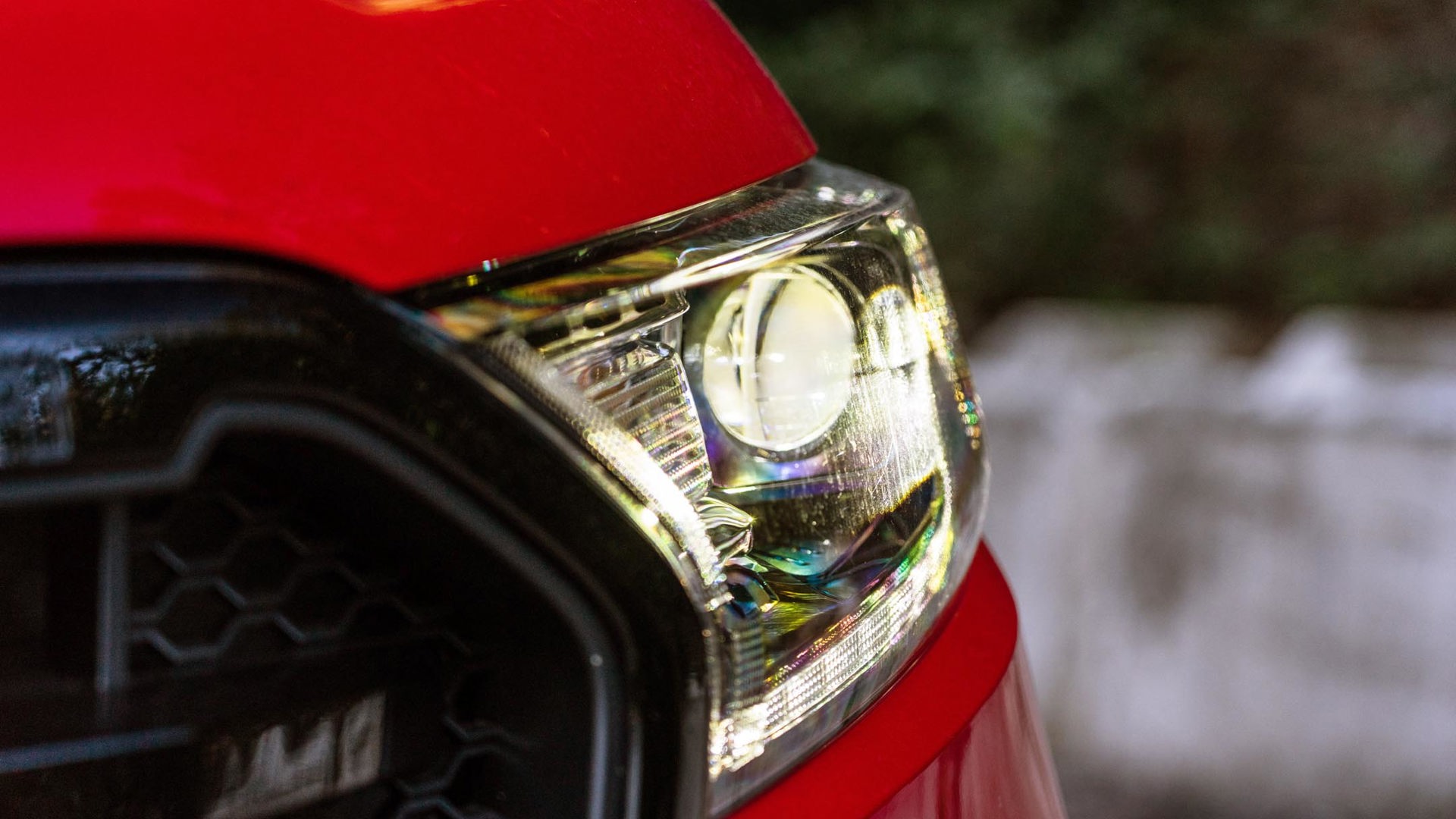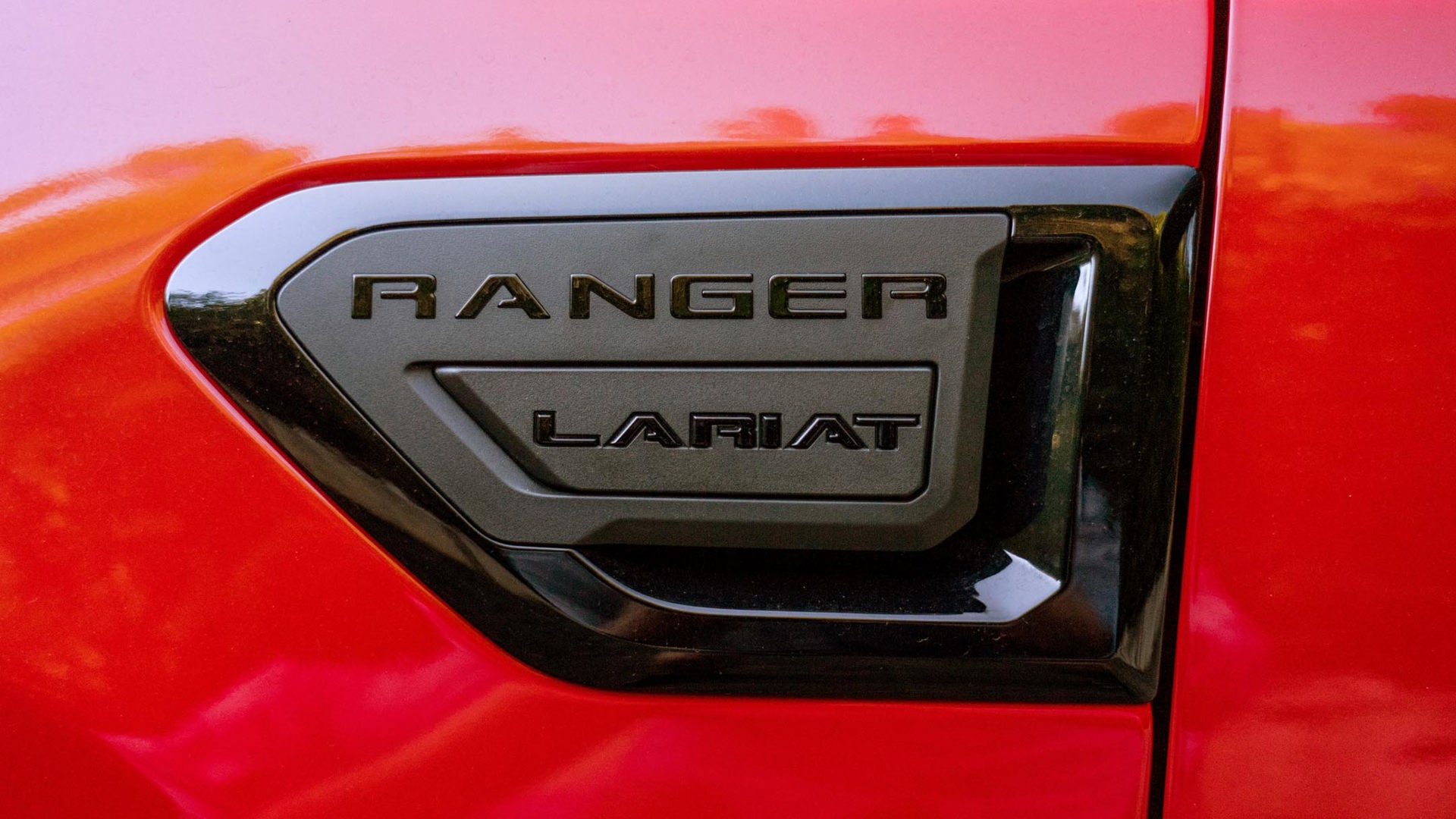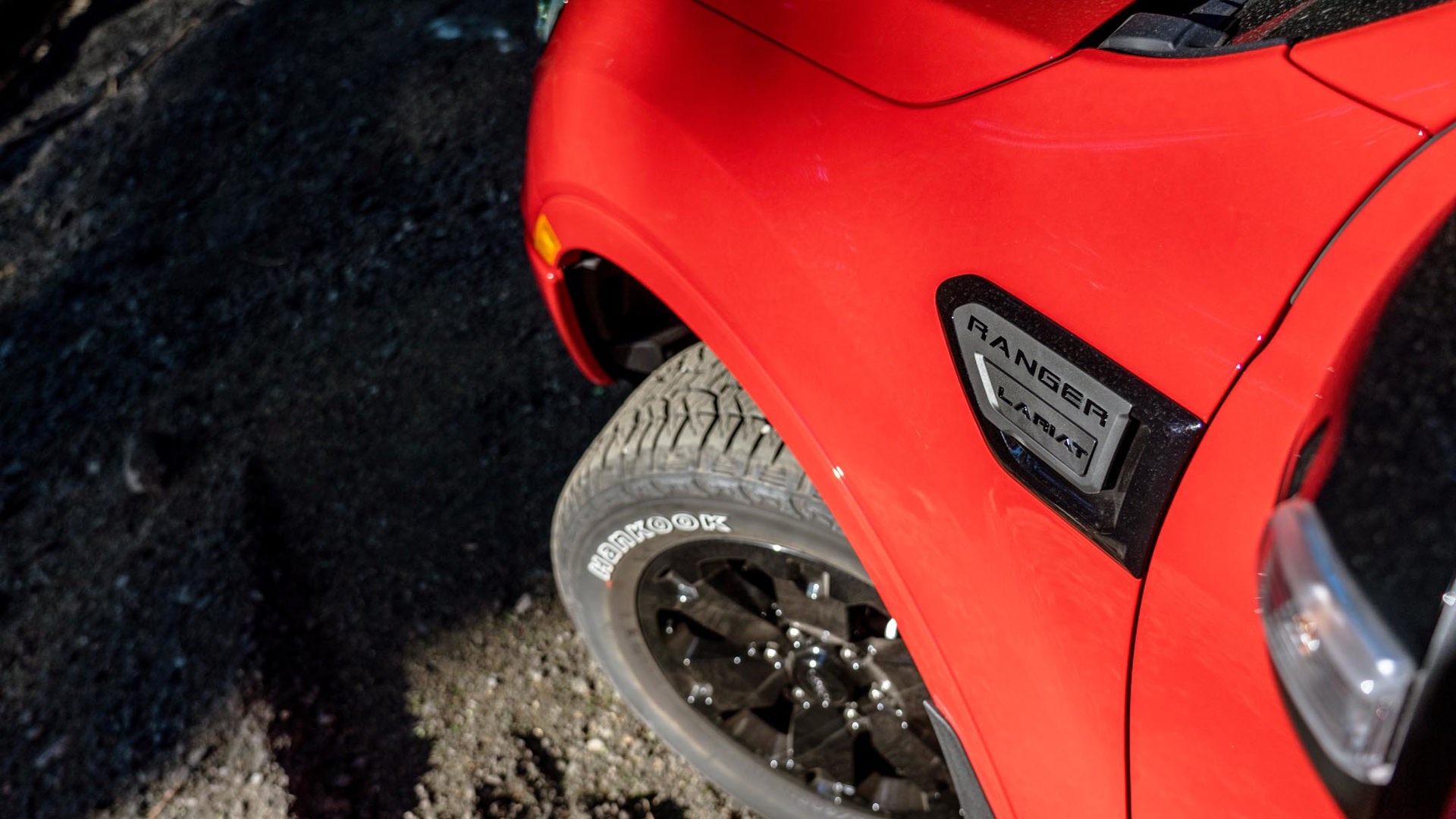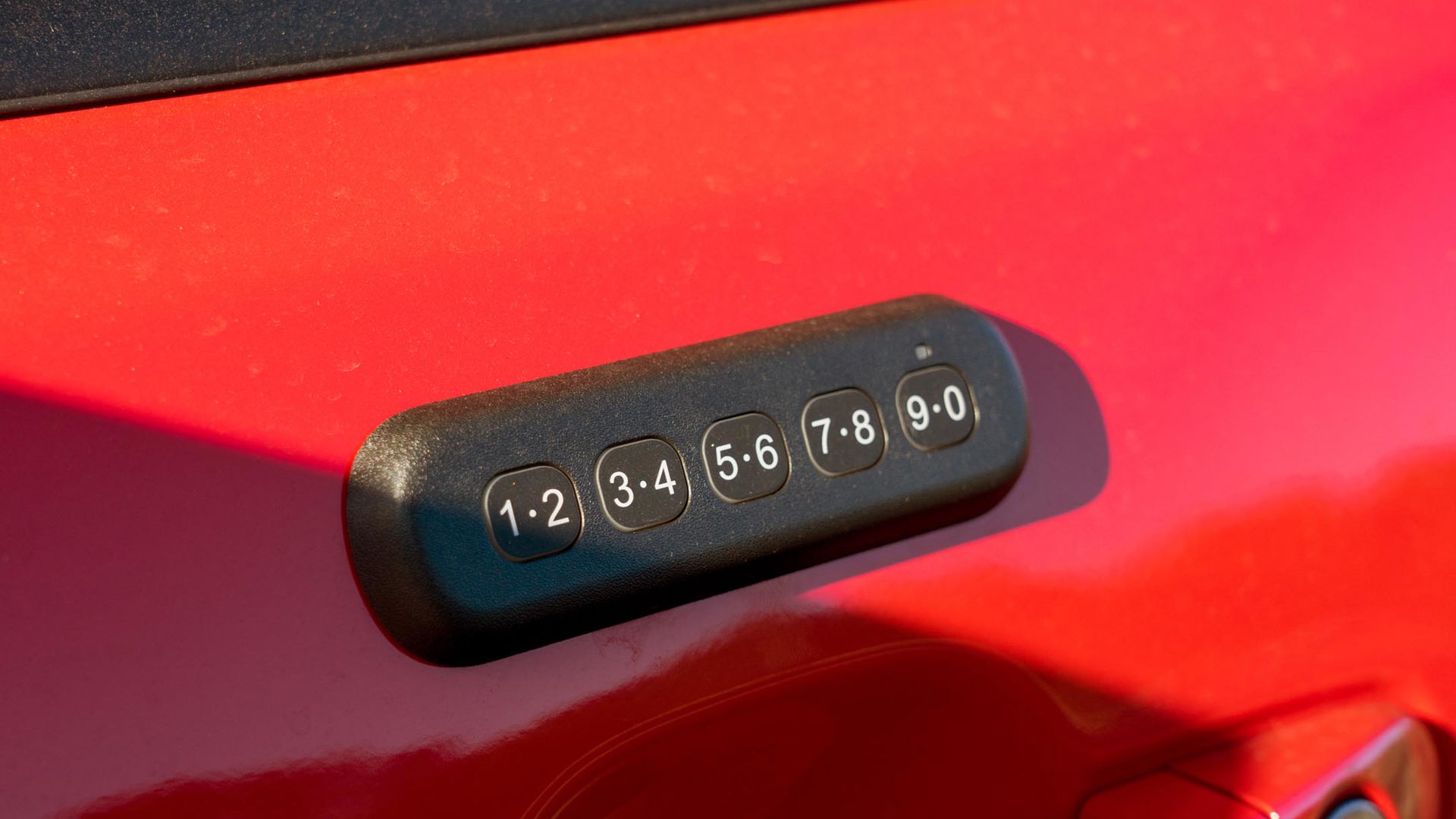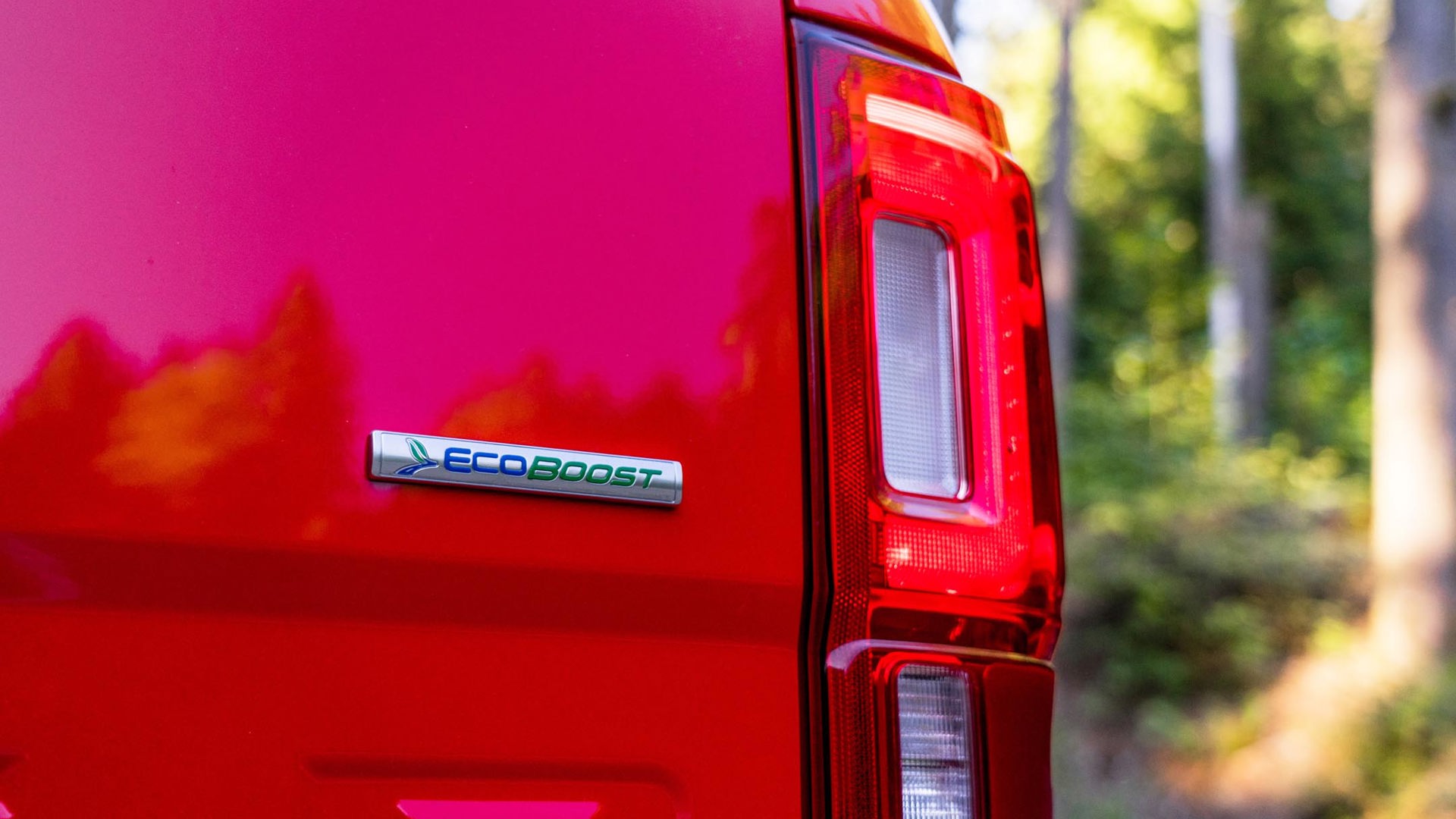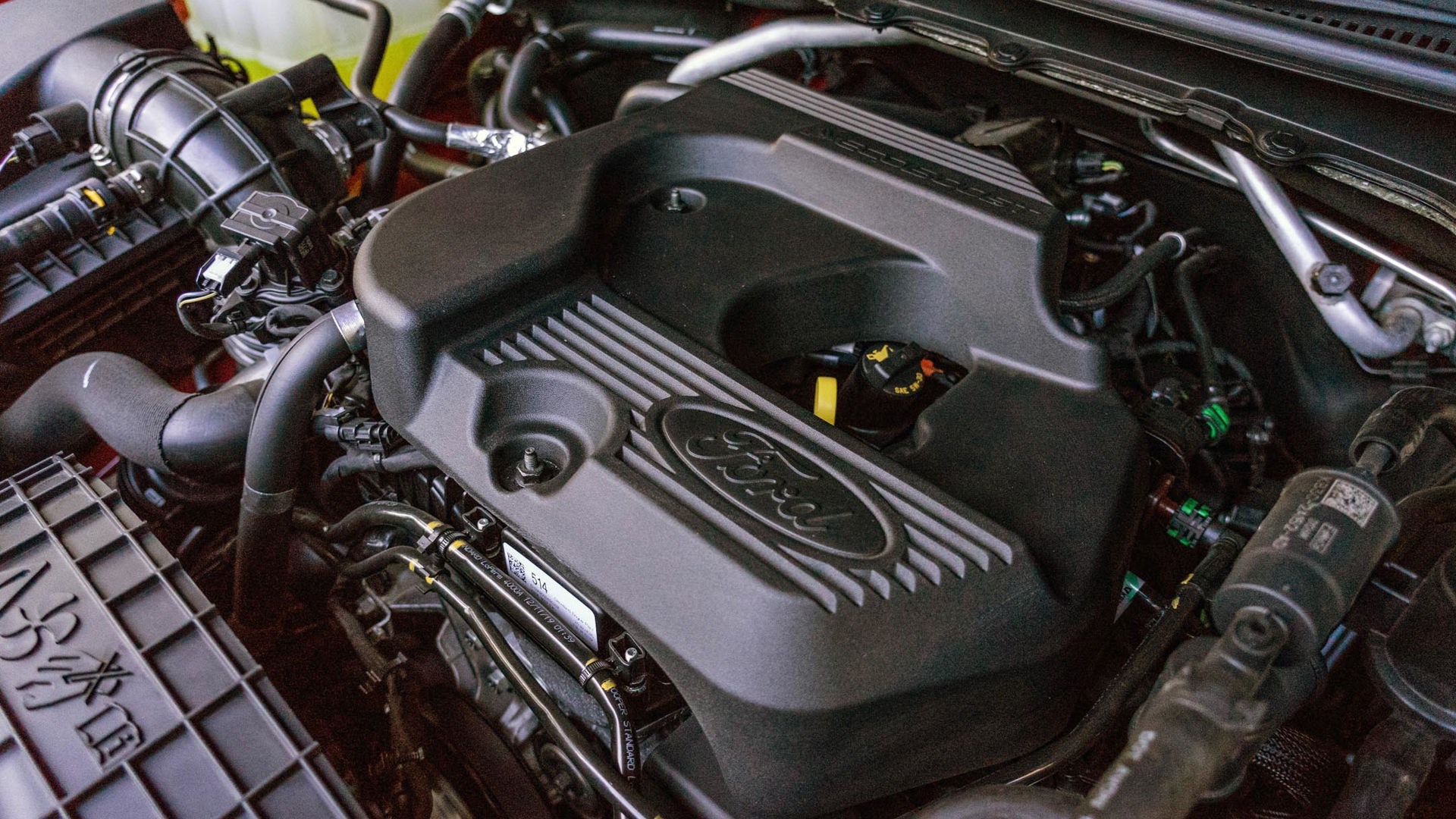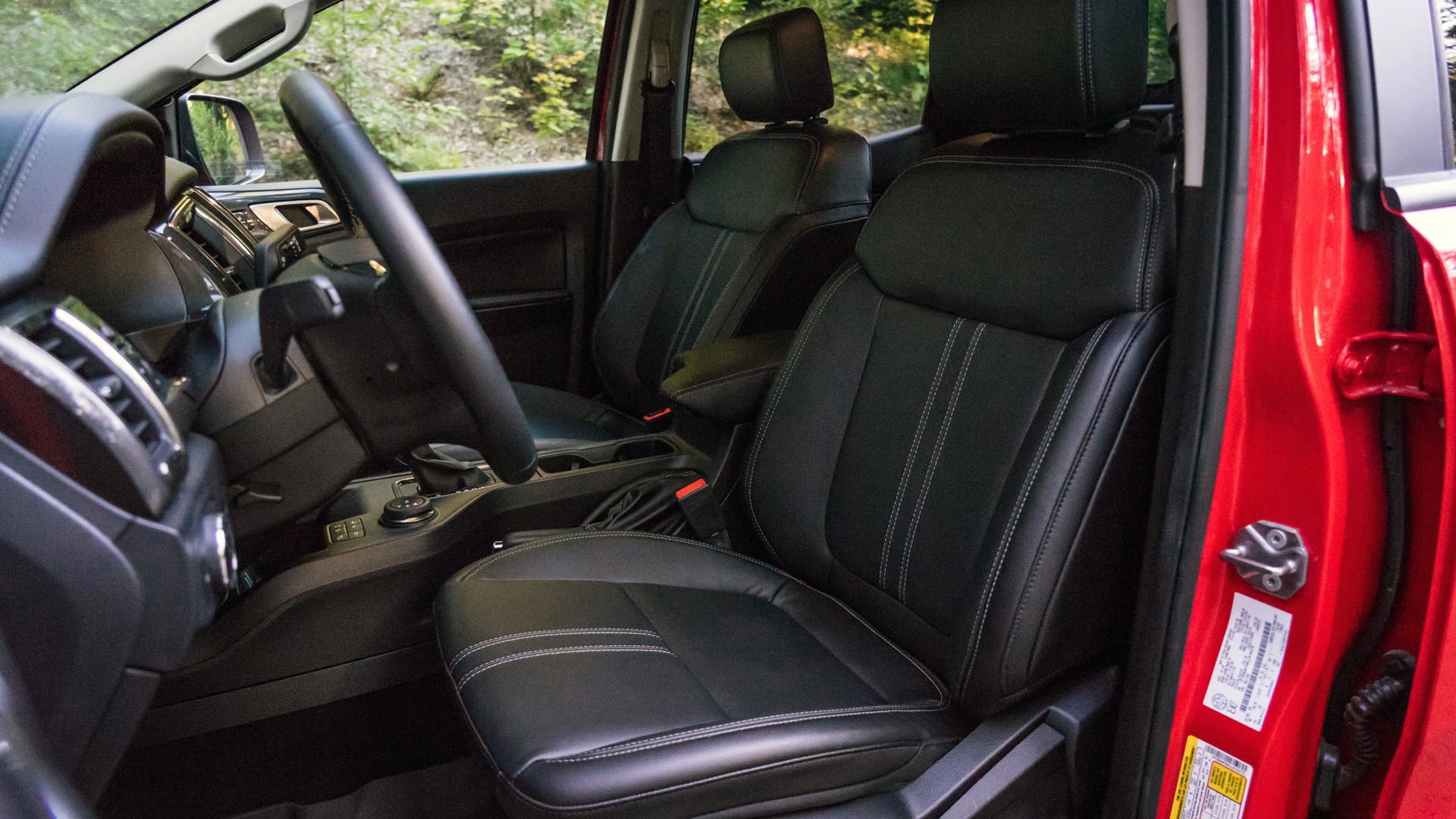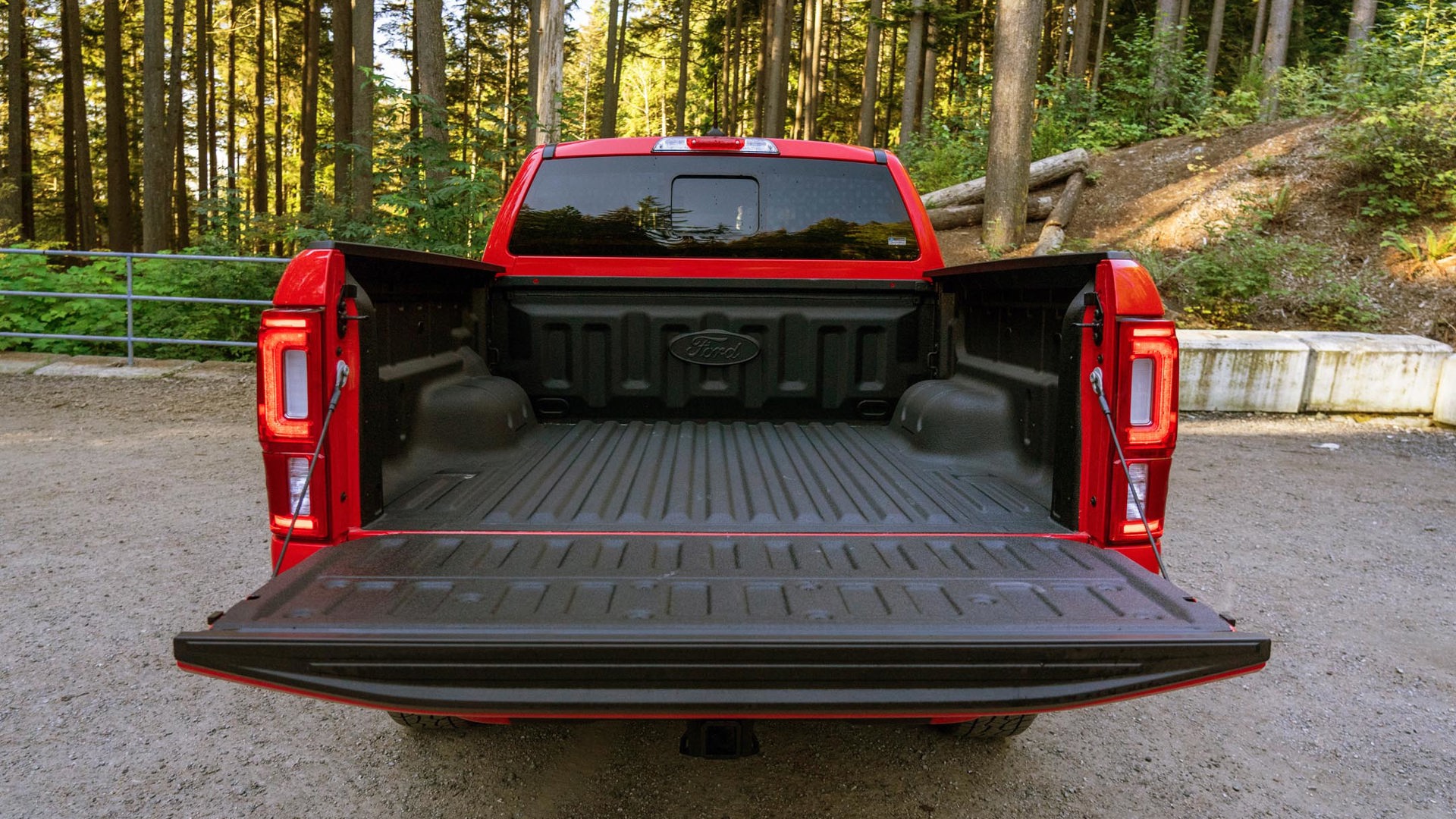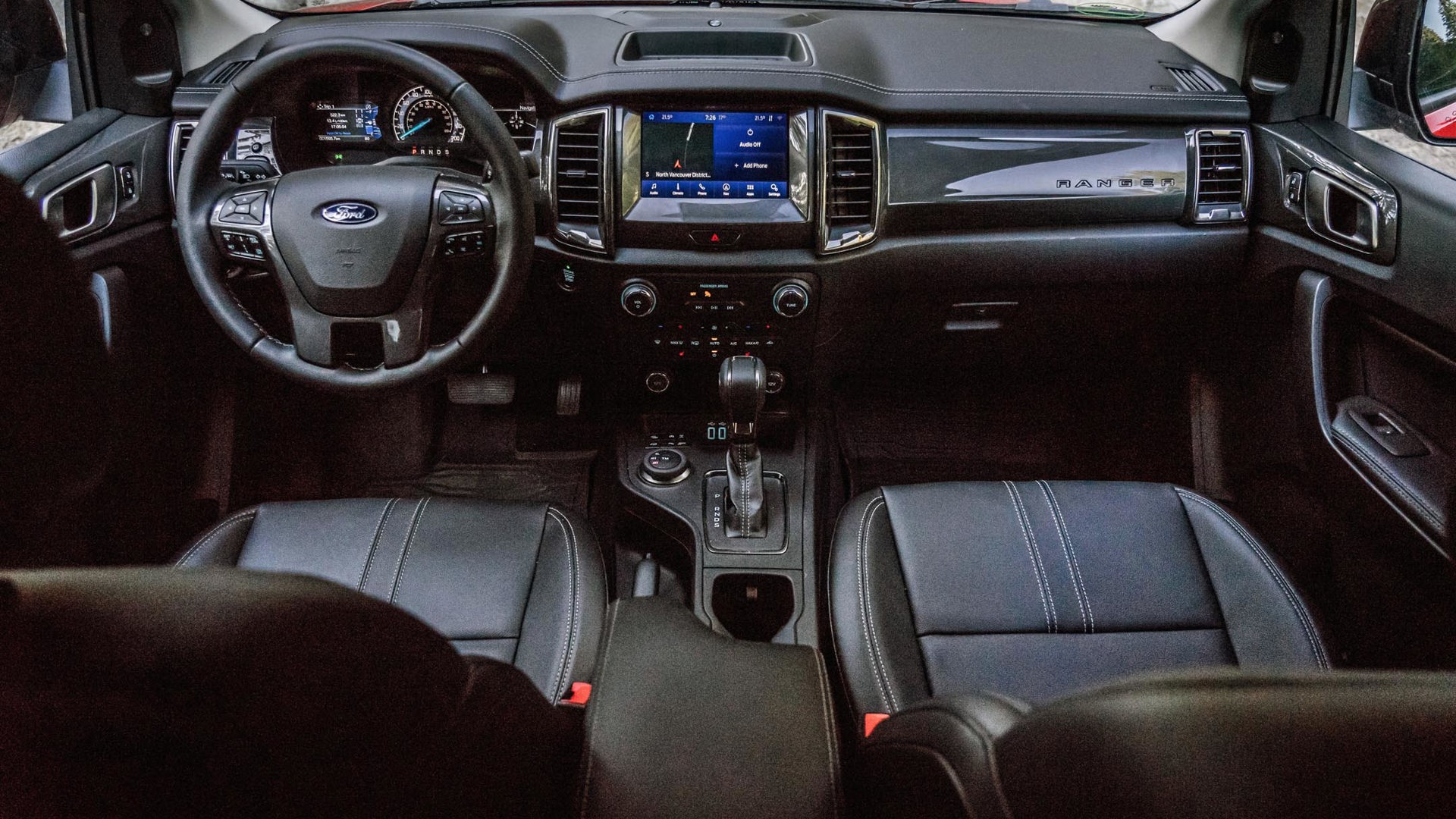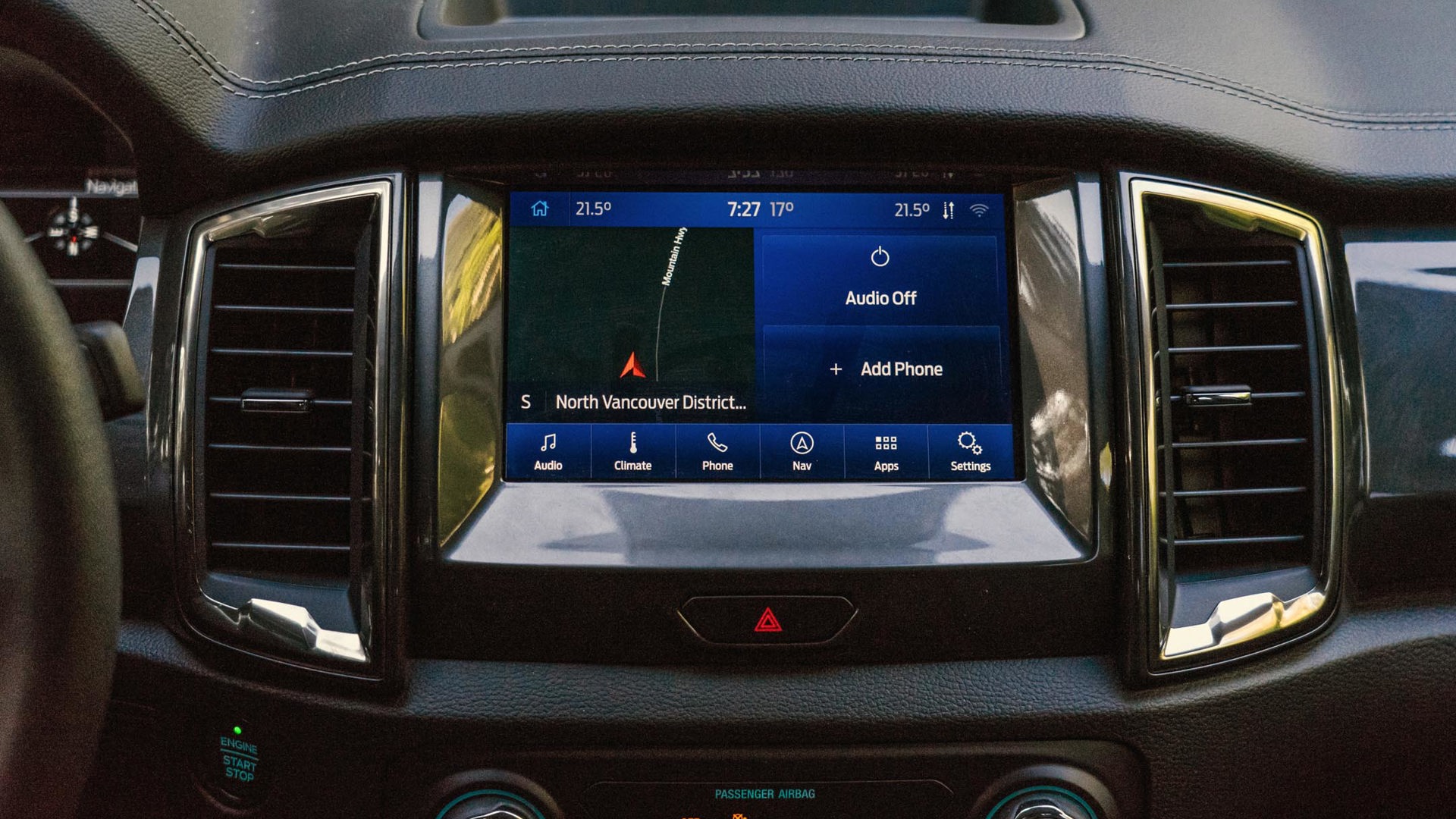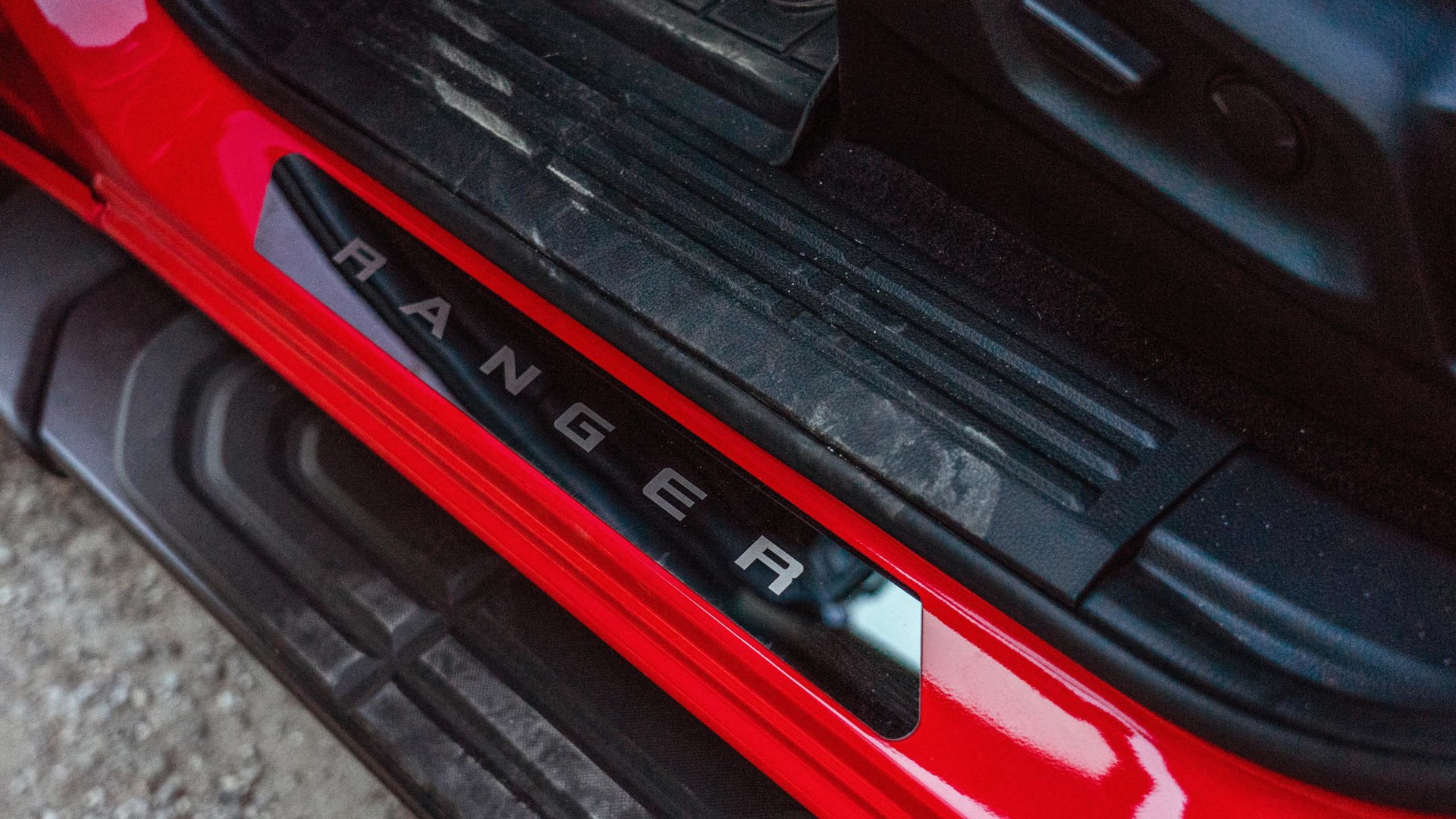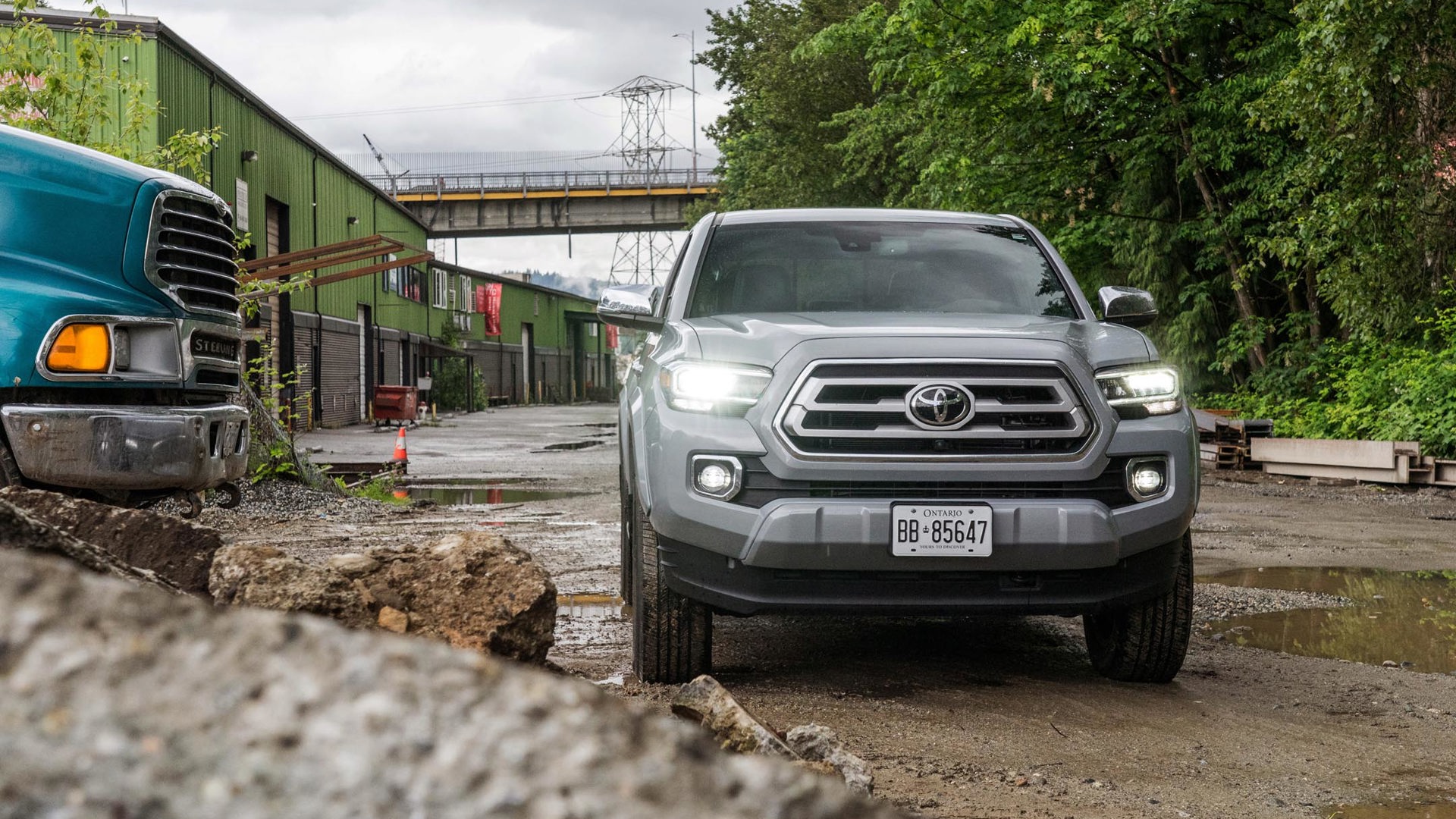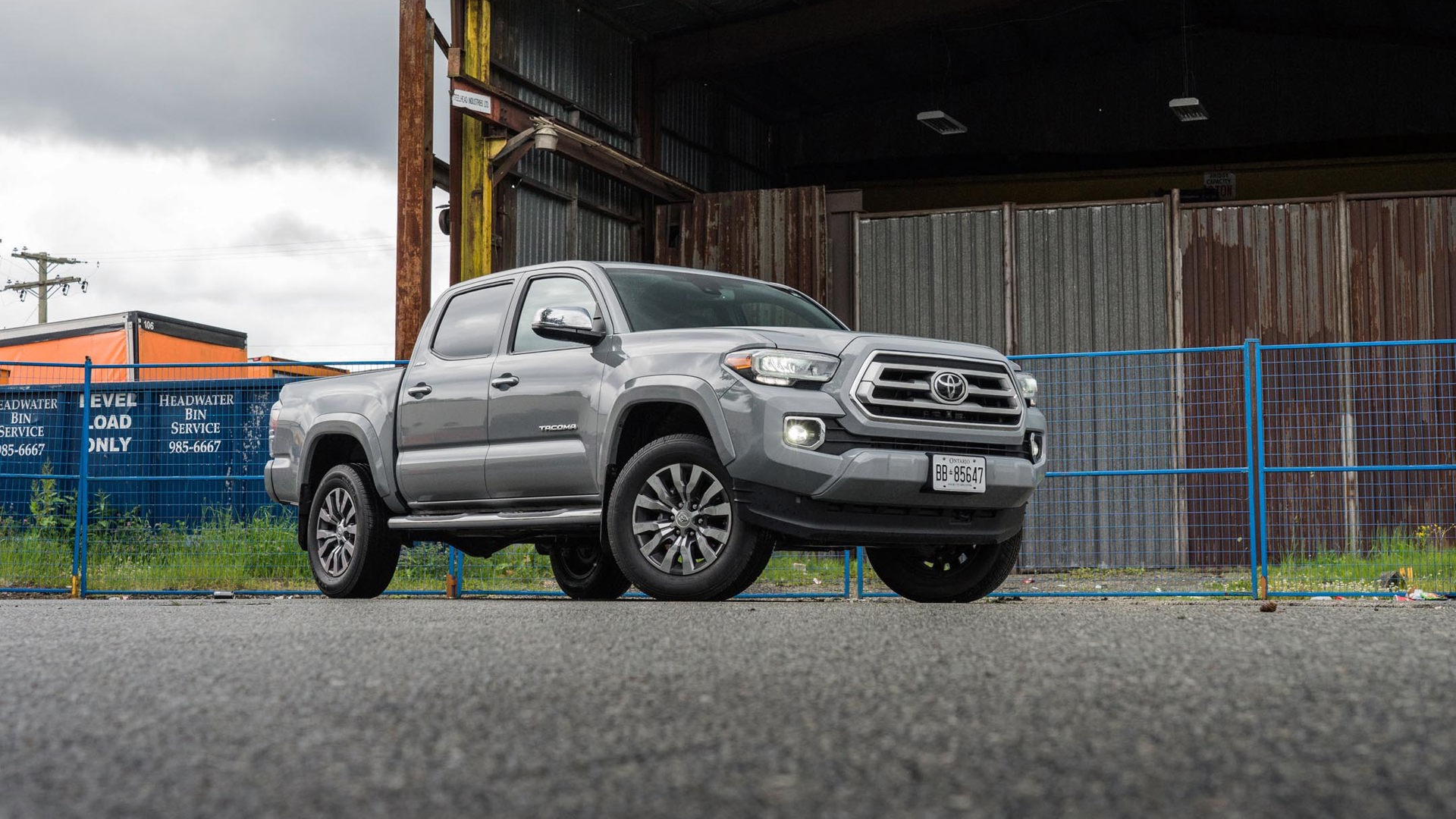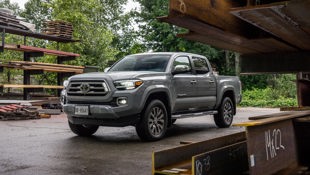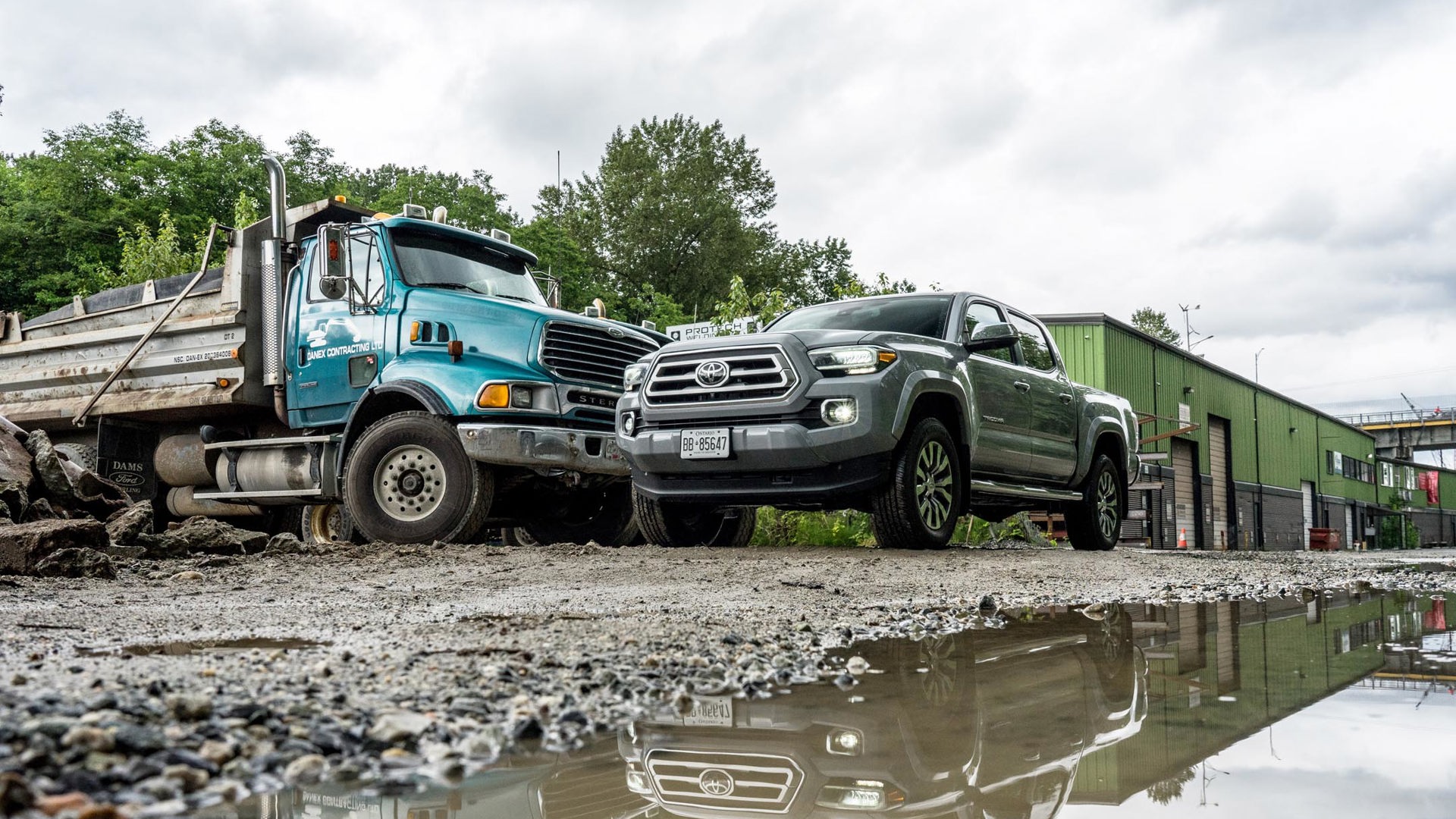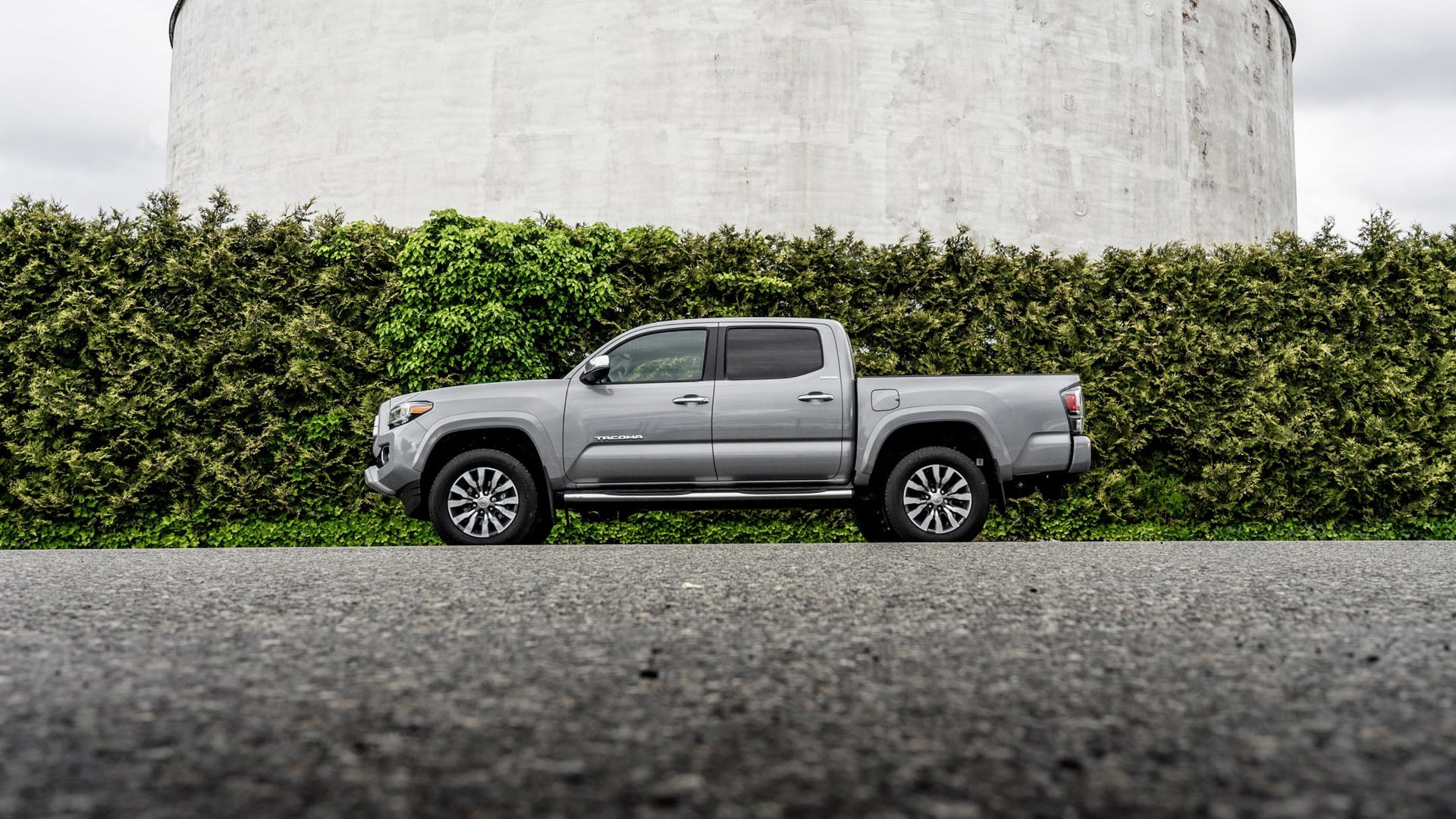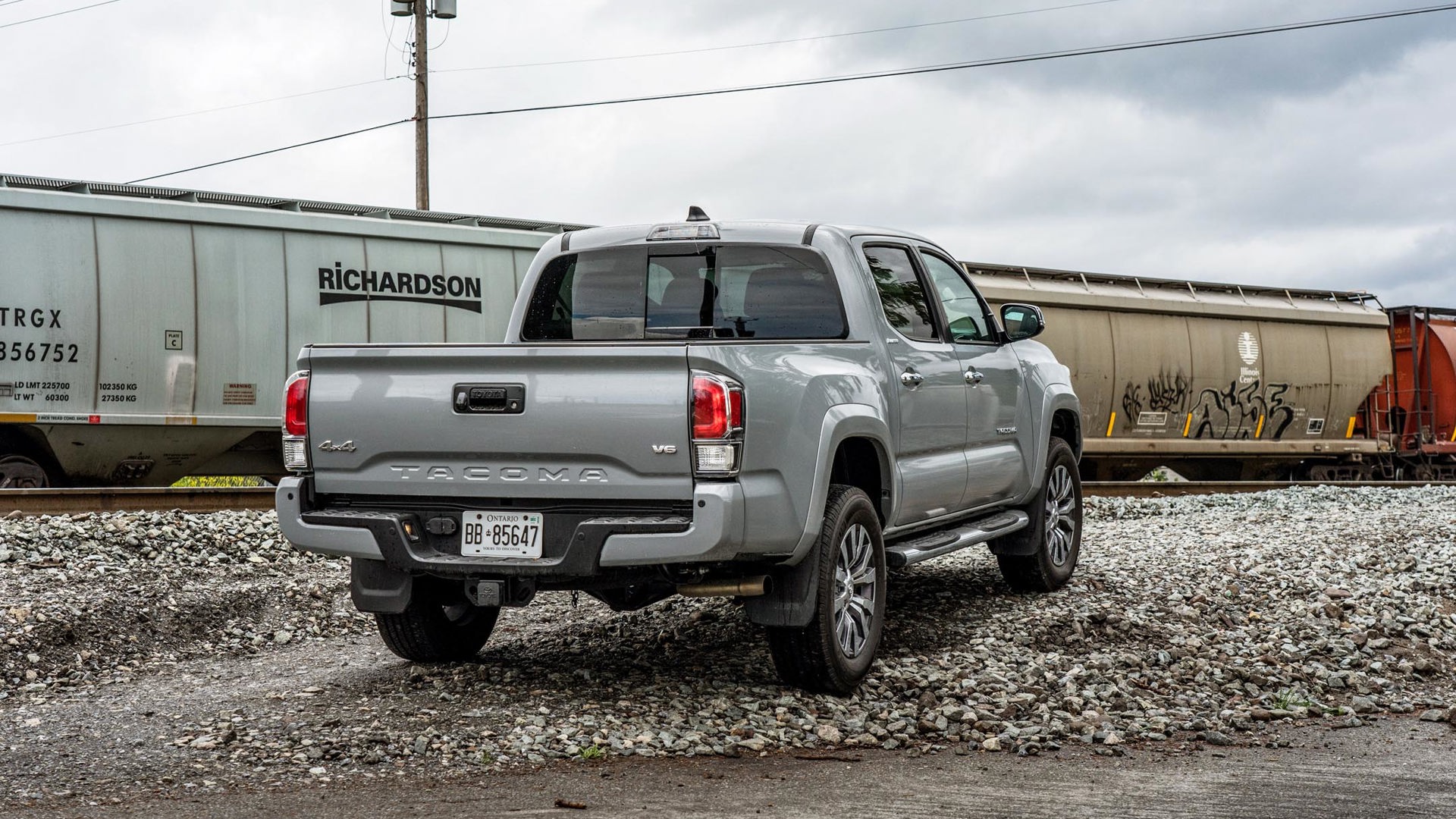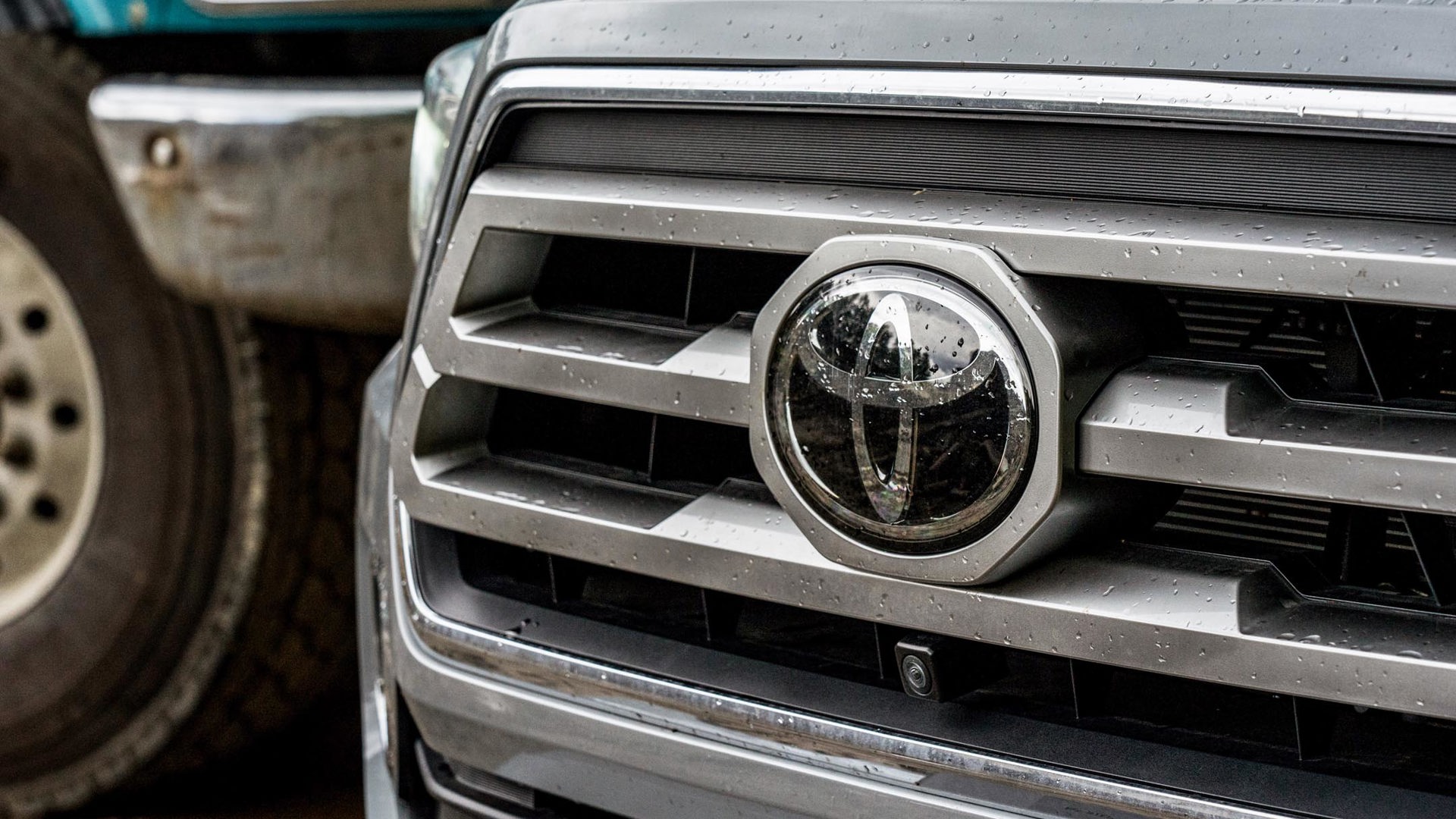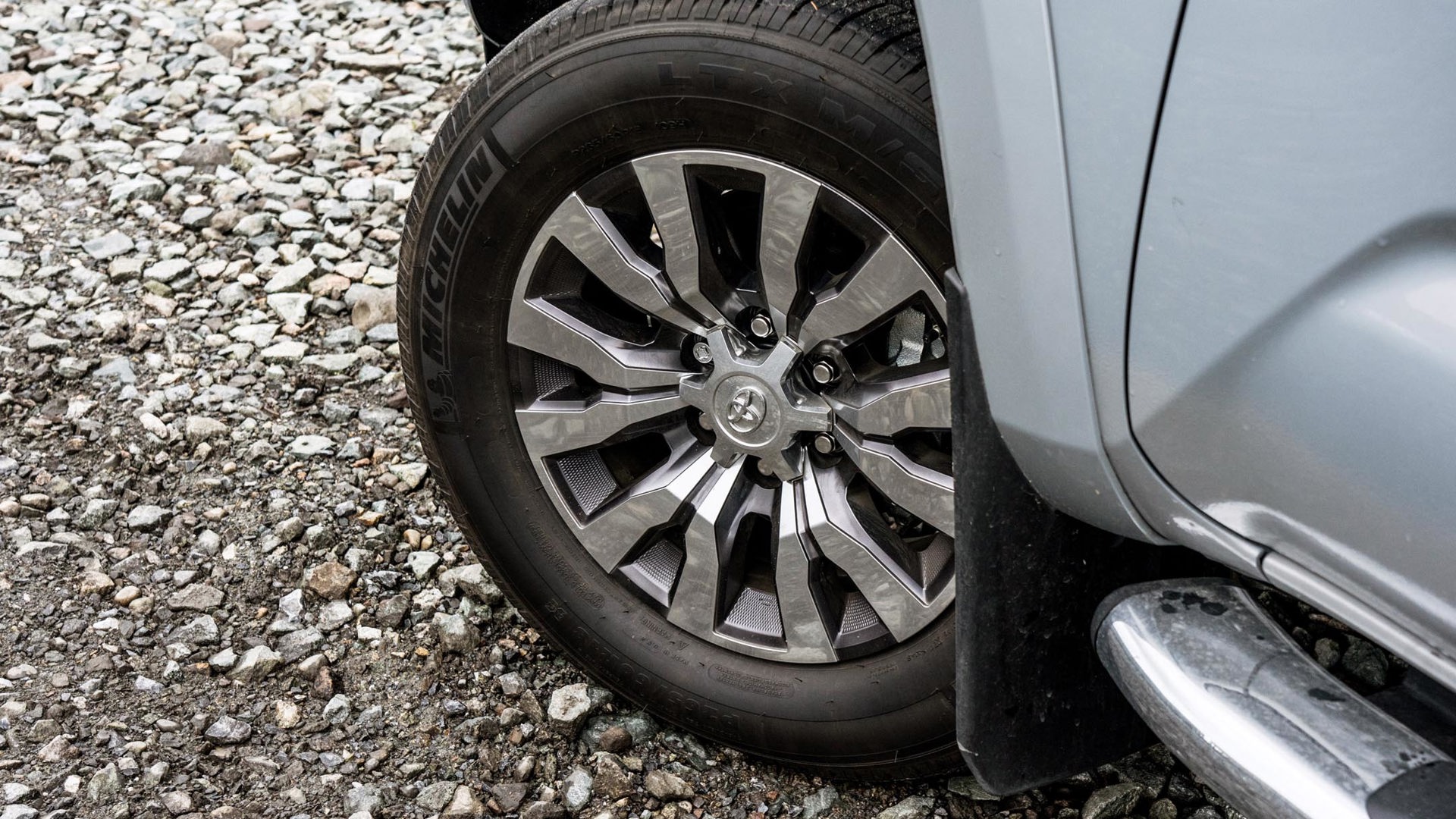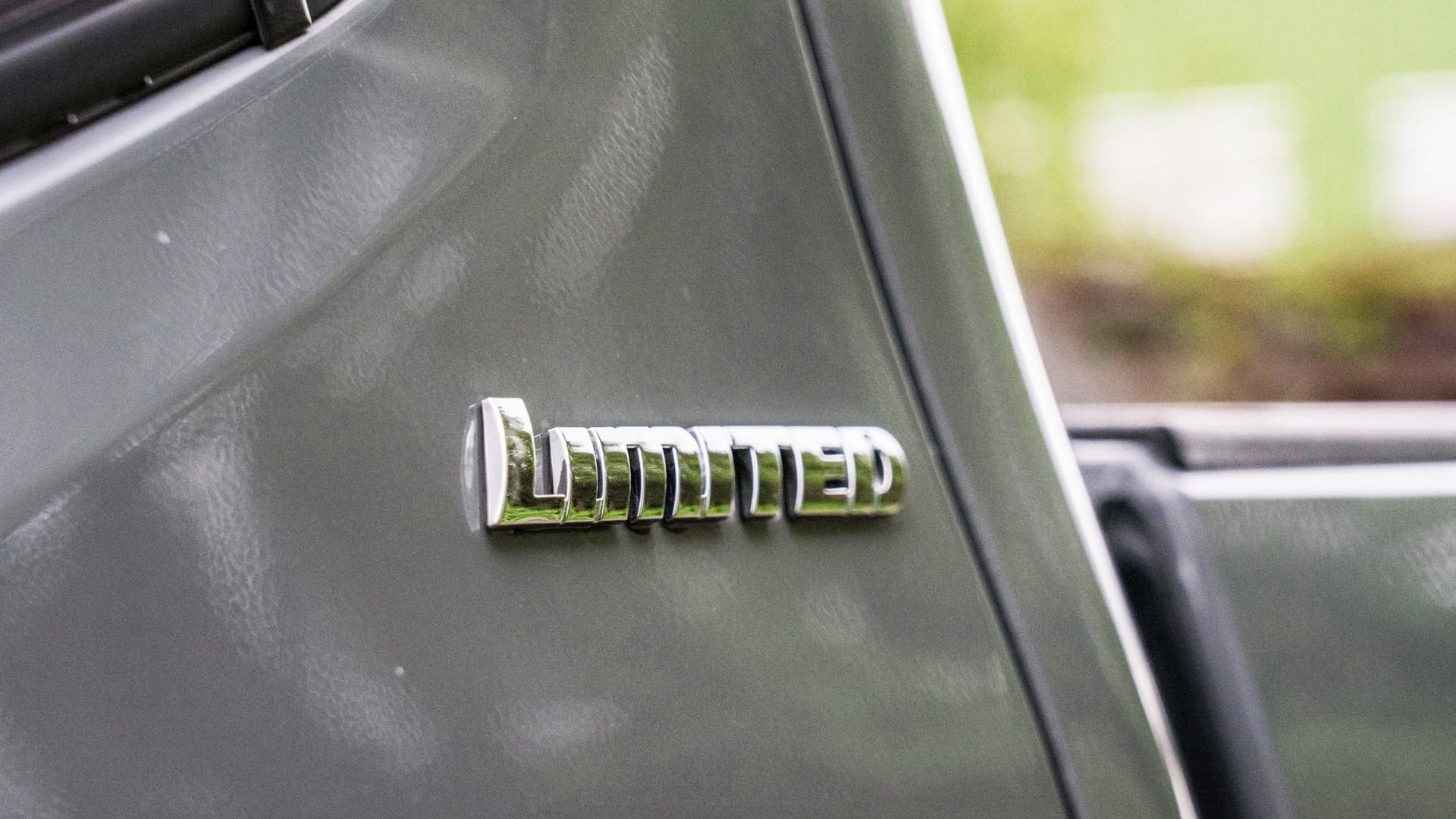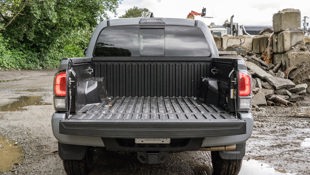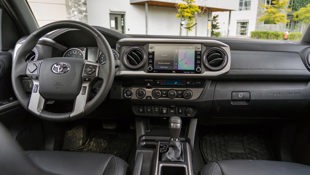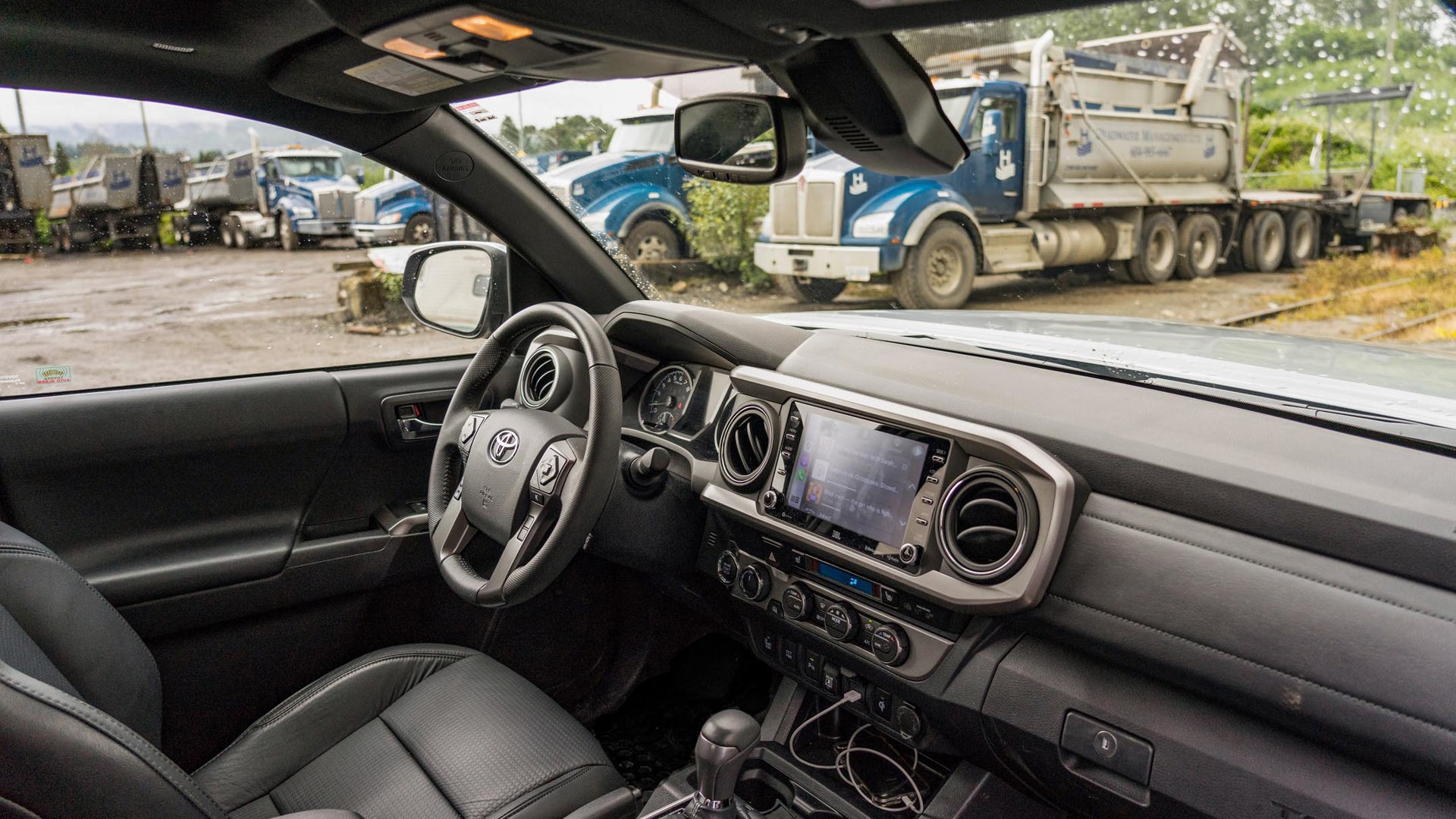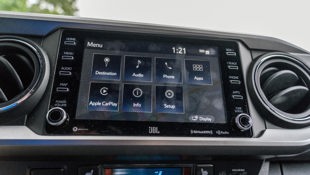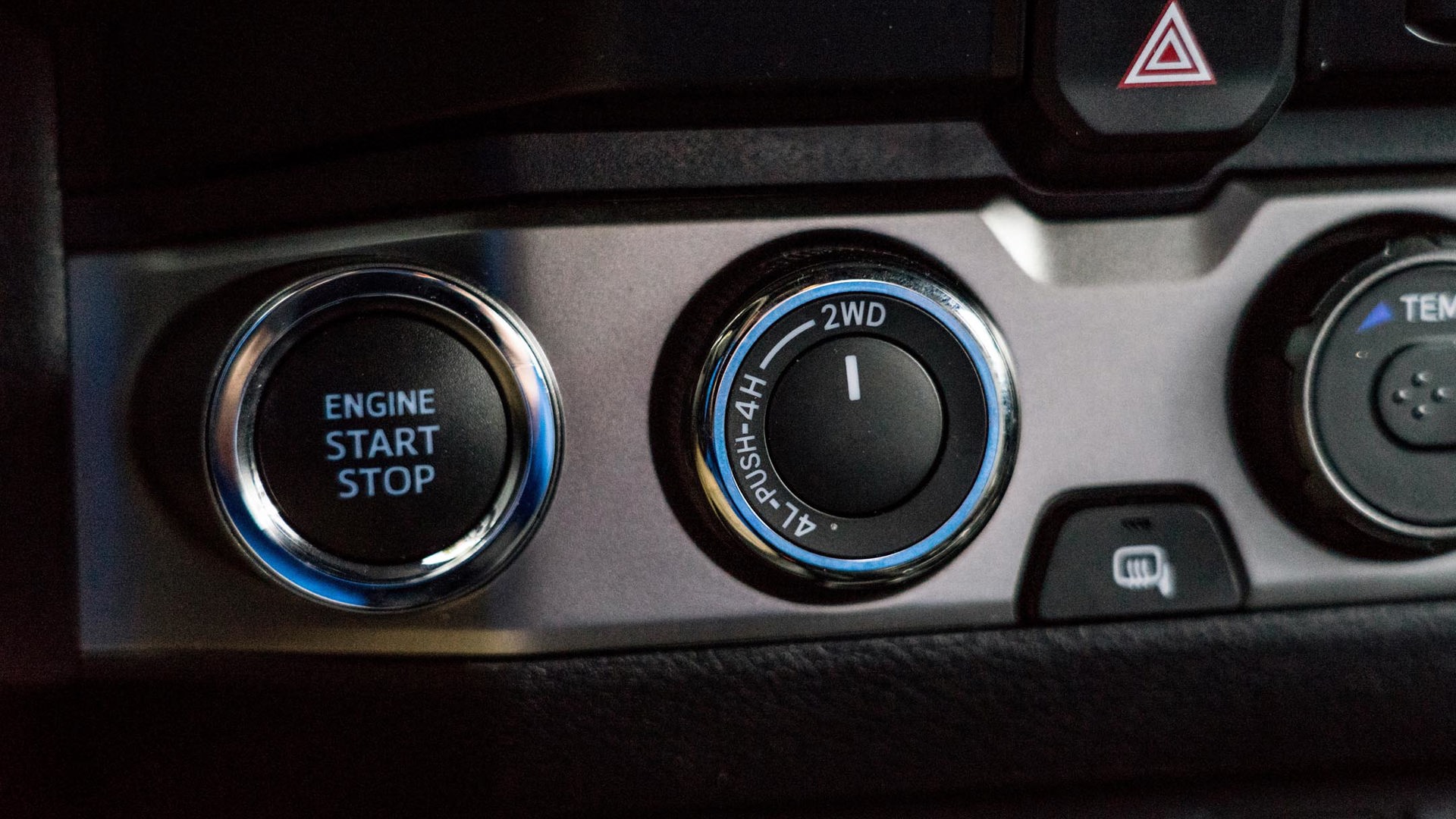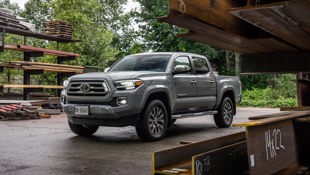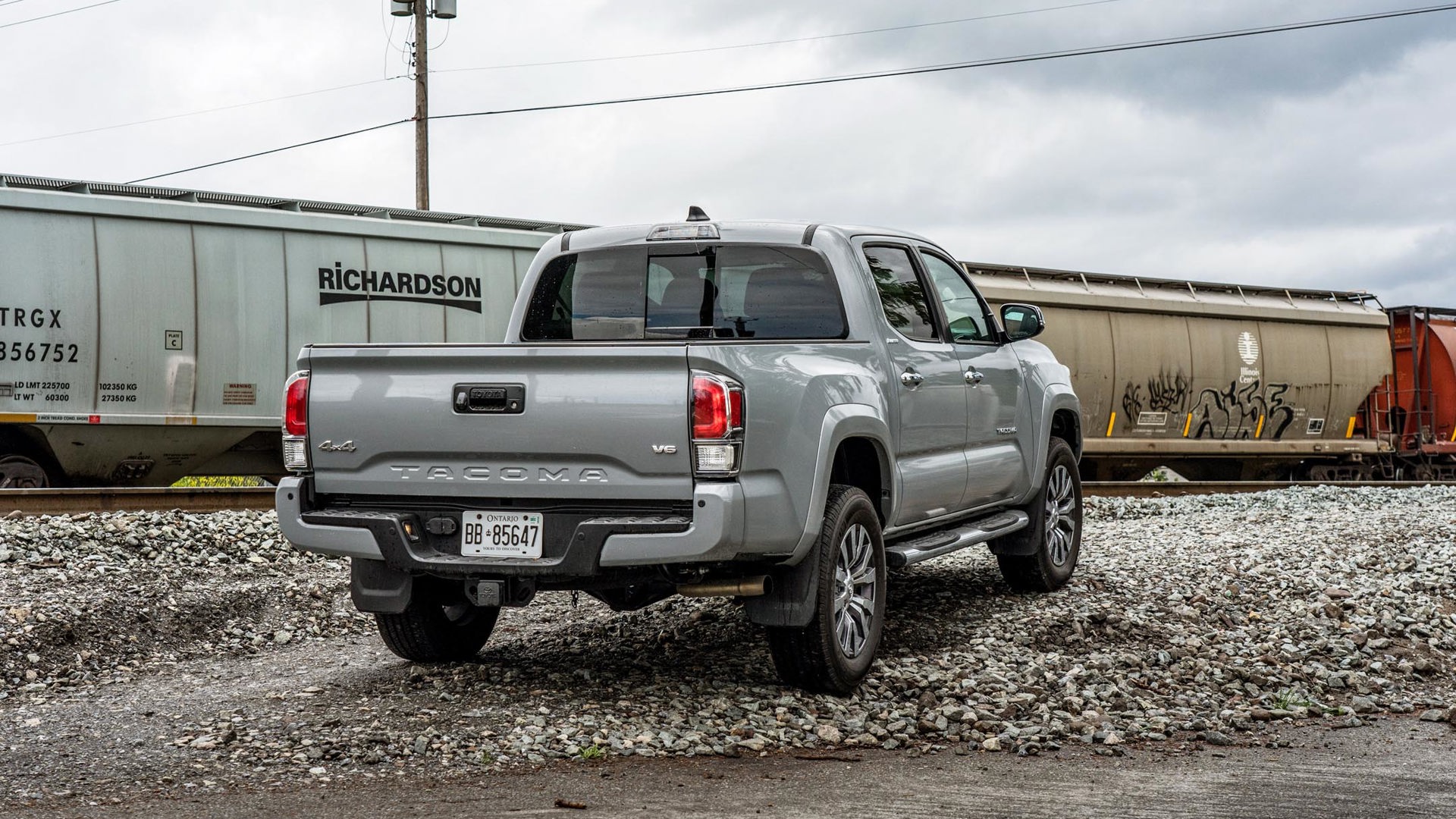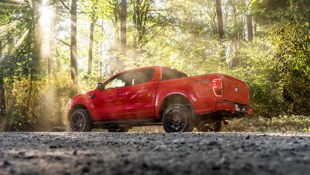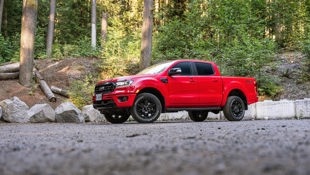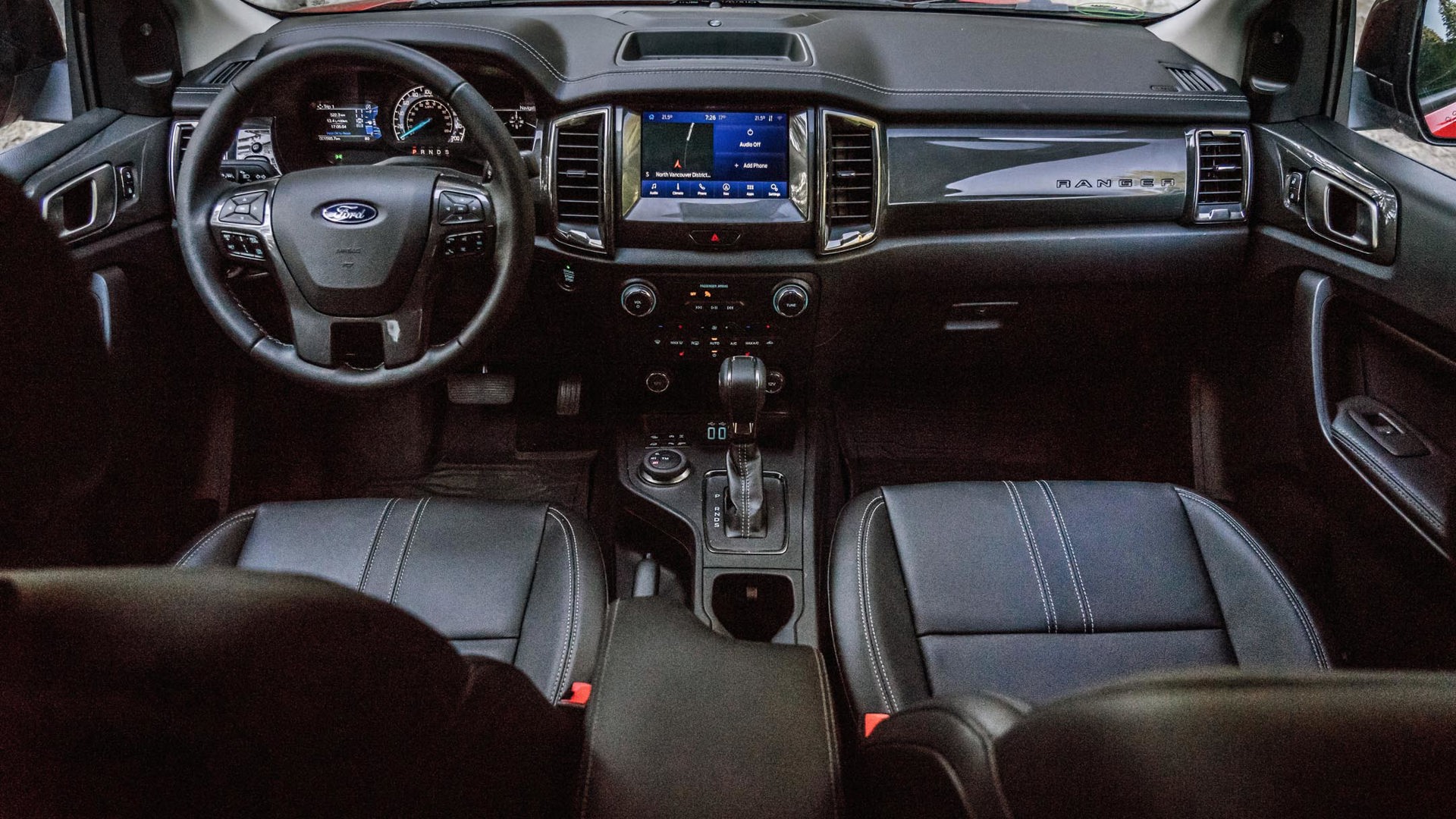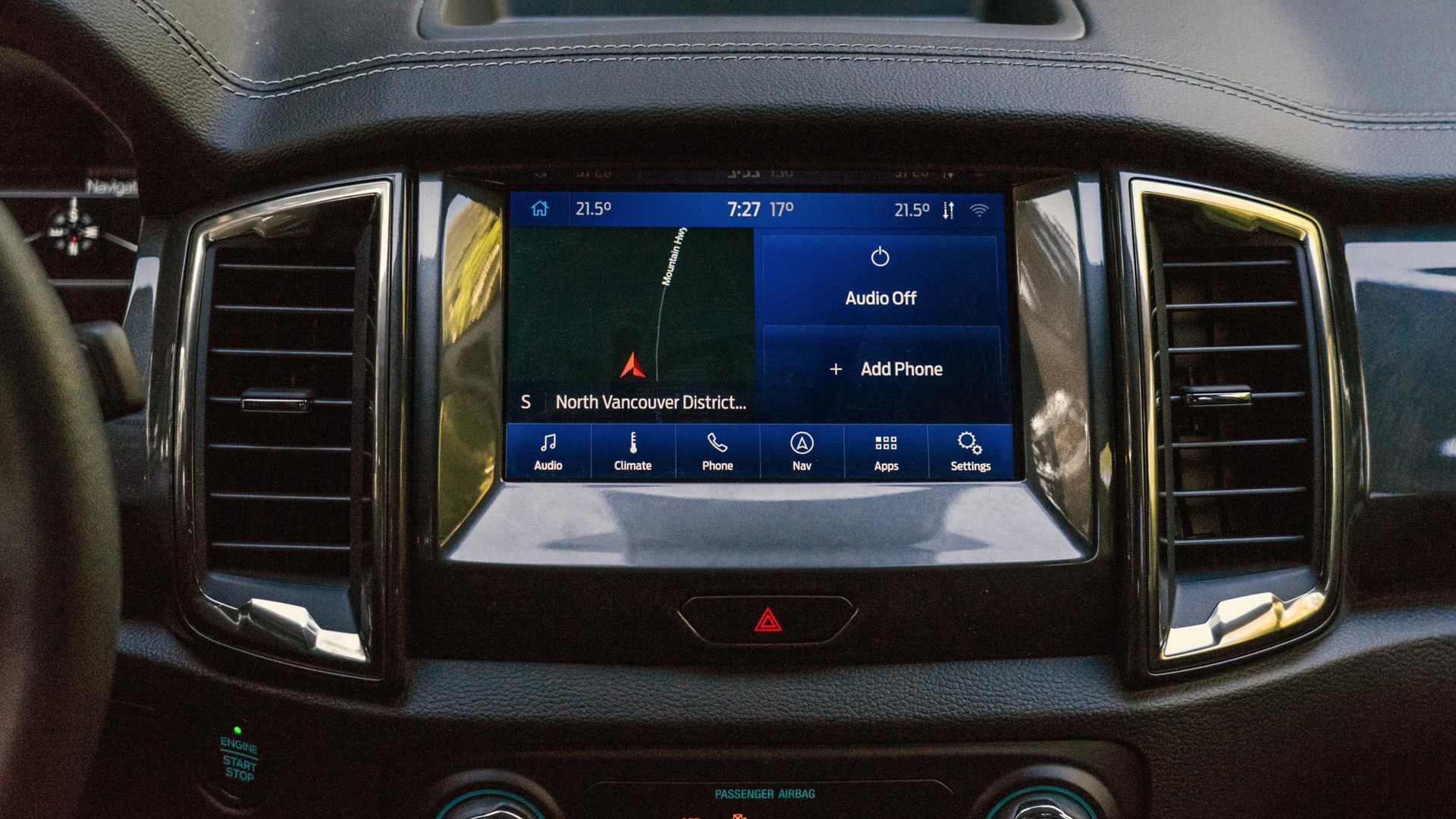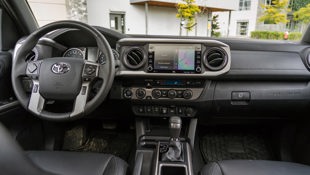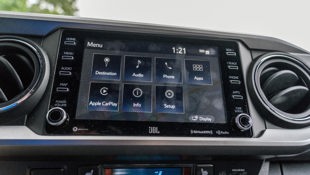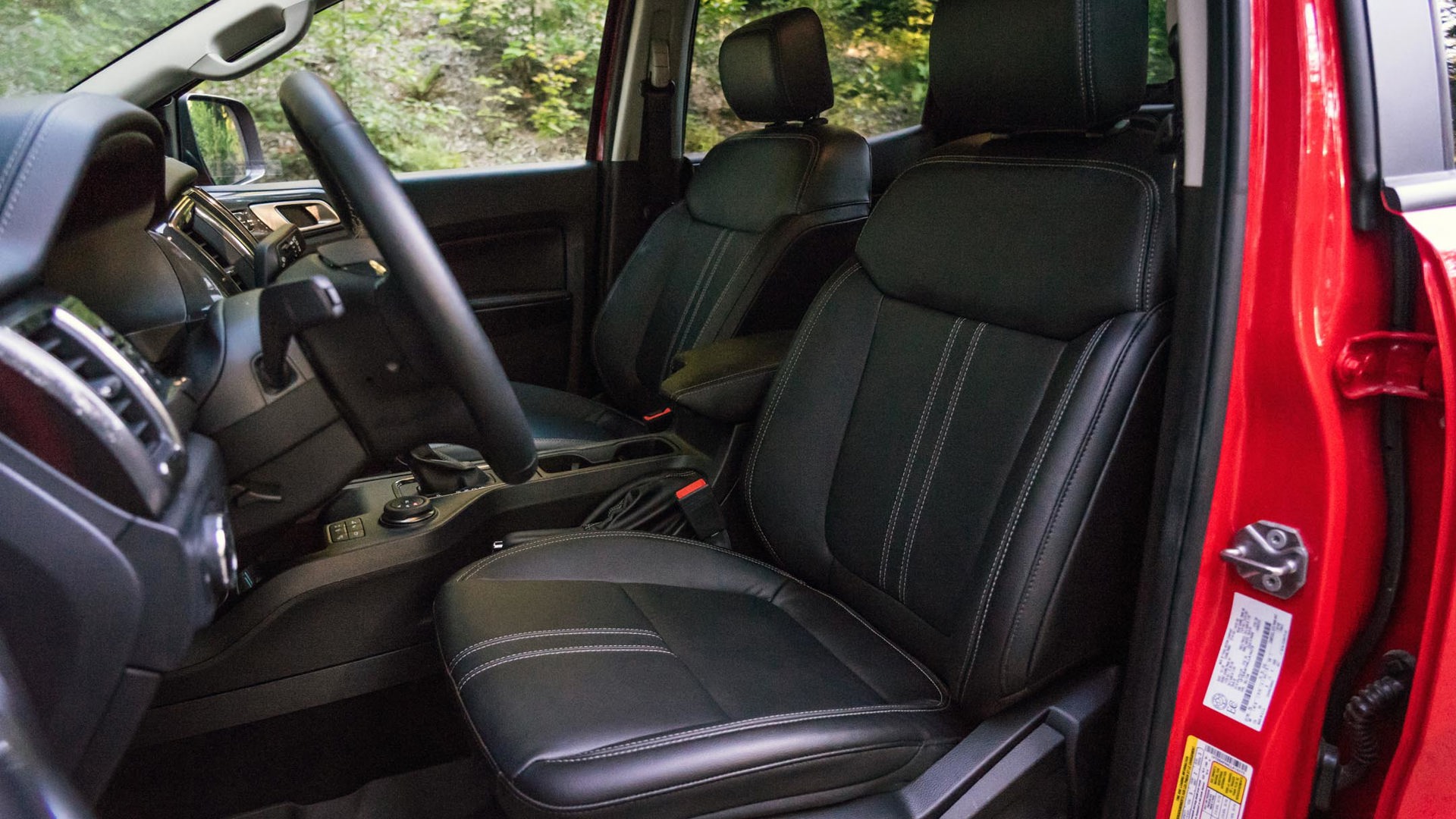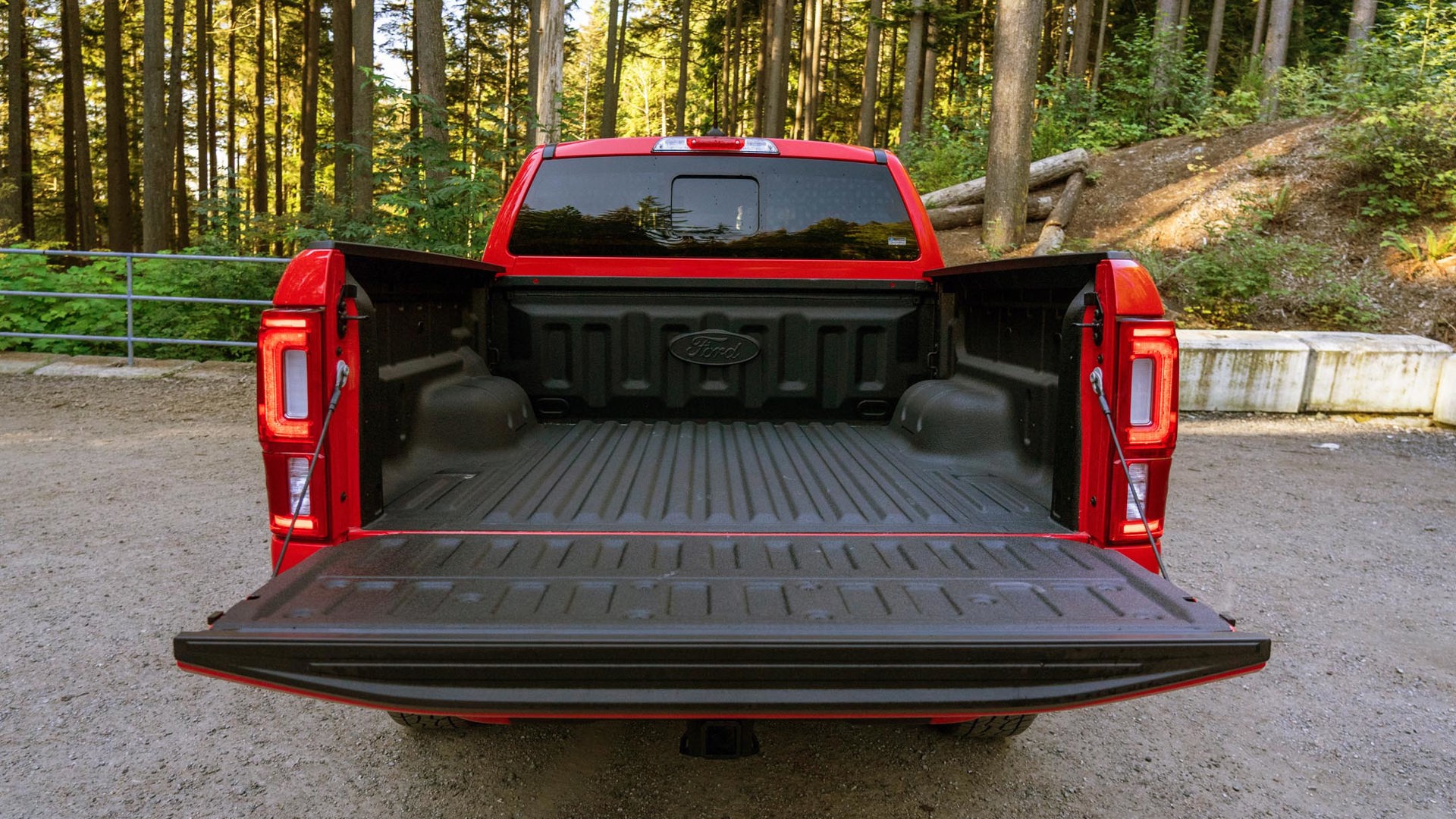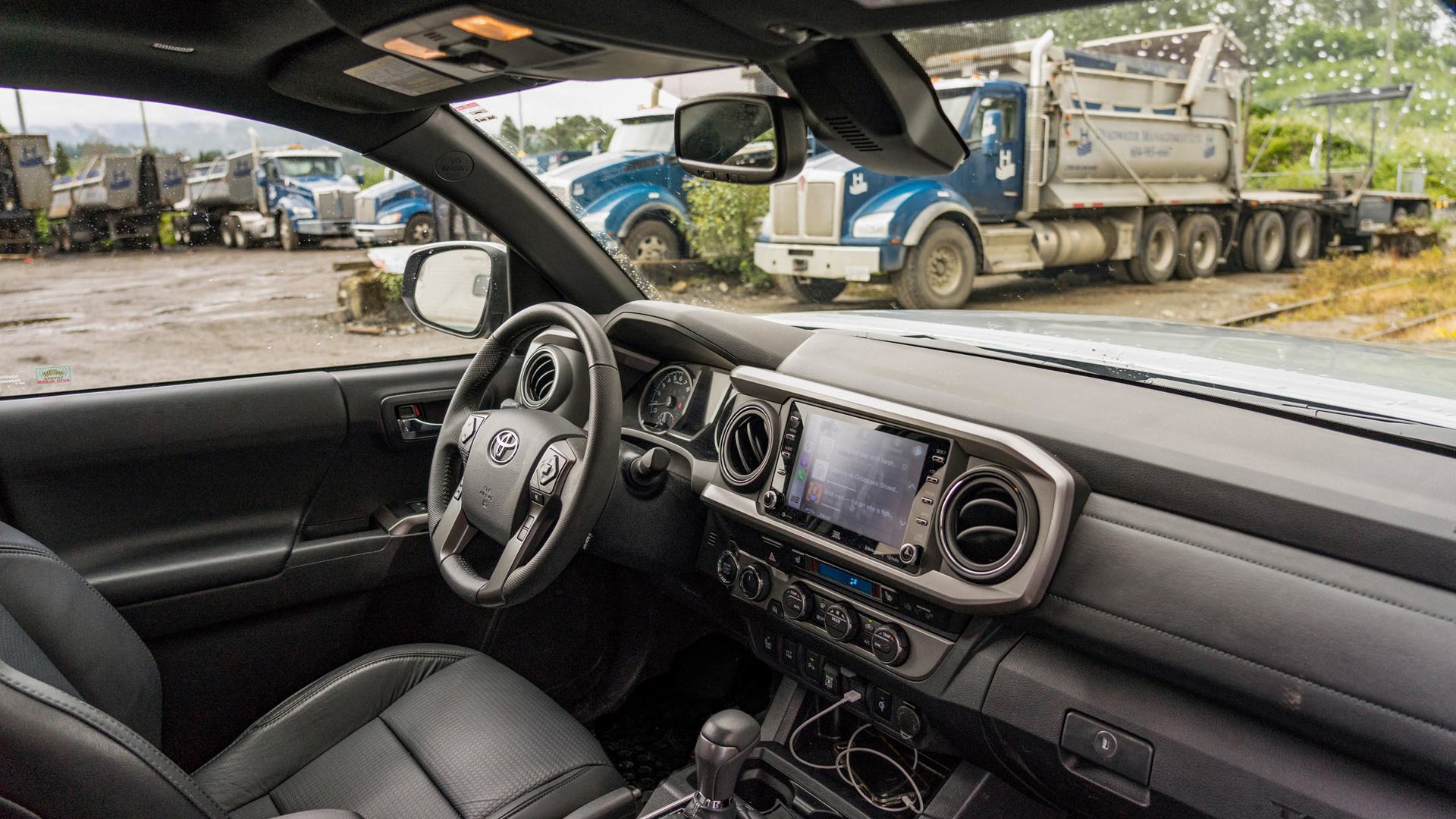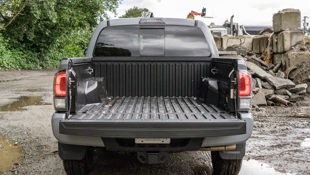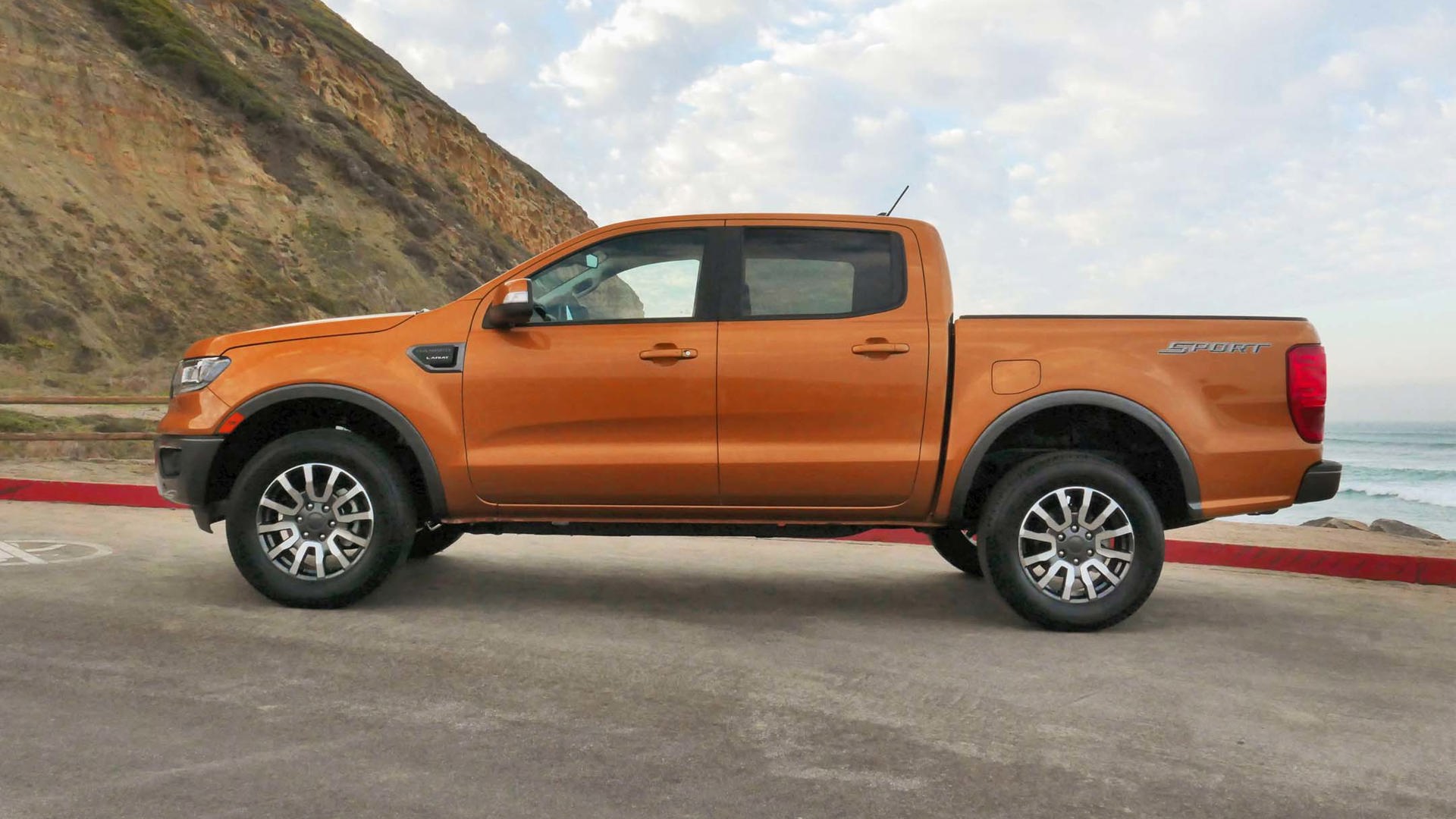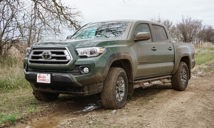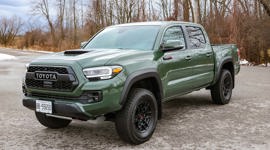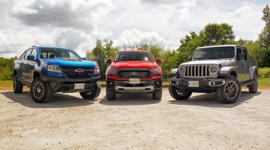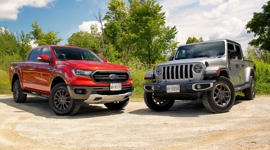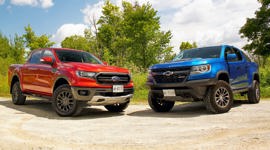Comparison Data
|
2020 Ford Ranger Lariat
|
2020 Toyota Tacoma Limited
|
|---|---|
|
Engine Displacement
2.3L
|
3.5L
|
|
Engine Cylinders
I4
|
V6
|
|
Peak Horsepower
270 hp
|
278 hp
|
|
Peak Torque
310 lb-ft
|
265 lb-ft
|
|
Fuel Economy
11.8 / 9.8 / 10.9 L/100 km cty/hwy/cmb
|
12.0 / 10.5 / 11.9 L/100 km cty/hwy/cmb
|
|
Cargo Space
5' box
|
5' box
|
|
Base Price
$42,619
|
$50,750
|
|
A/C Tax
$100
|
$100
|
|
Destination Fee
$1,950
|
$1,840
|
|
Price as Tested
$52,194
|
$52,690
|
|
Optional Equipment
$7,525 – Equipment Group 501A, $3,000; FX4 Off-Road Package, $1,400; Splash Guards/Mud Flaps, $150; Tray-Style Floor Liner, $250; Running Boards, $700; Trailer Tow Package, $600; Sport Appearance Package, $700; Spray-In Bedliner, $600; SecuriCode Keyless-Entry Keypad, $125
|
None
|
Some people buy trucks for work, some for play. In the midsize segment, it’s usually recreation that spurs the decision.
Maybe it’s because you’ll often see them parked side-by-side at the bike park that there seems to be a friendlier rivalry between the Toyota Tacoma and Ford Ranger than, say, between the Ram 1500 and Chevrolet Silverado. Driving the Ranger around, Tacoma owners always wanted to talk about it. Driving the Tacoma around, people in Rangers would come up and ask about TRD options.
Both these vehicles have roughly the same job, but they go about it in two totally different ways. Or rather, not a job. They’re playing two different games.
Styling
Somewhere at Toyota’s headquarters is a large filing cabinet with the designs for the Tacoma, and there’s a sign hung on the front of it that says, “Don’t touch anything.” The Tacoma hasn’t changed much in the past five years, nor does it look much different from its previous generation.
This Limited crew-cab looks more city-slicker spec than the Ranger in Lariat trim, but both come with the expected features of step rails, bed liners, and so forth. Both have 18-inch wheels. The Ranger is the fresher design, and looks it. With the Tacoma, you can rest assured a 2022 redesign isn’t going to suddenly make your Toyota look outdated. Or even a 2040 redesign.
Toyota Tacoma: 7/10; Ford Ranger: 8/10
Safety
Last year saw the Tacoma receive the same standard driver assists as most of the Toyota range, including collision mitigation, pedestrian detection, and automatic high-beams. The Ranger also comes with these same features, as well as blind-spot monitoring.
Both vehicles scored well in crash tests, with almost identical results. The slight edge goes to the Tacoma here, as higher trims have better headlights.
Toyota Tacoma: 8/10; Ford Ranger: 7/10
Features
Both these trucks are approaching the most you can spend on them, and as such they’re loaded with everything up to the proverbial kitchen sink. The Tacoma has caught up to the Ranger and now offers available Apple CarPlay and Android Auto for its touchscreen interface. The Toyota also has wireless charging, which the Ford doesn’t.
Add in heated leather seats and a power-adjustable driver’s seat for both (the Ranger also gets a power passenger’s seat), and these trucks are well-optioned enough to be comfortable daily drivers.
Toyota Tacoma: 8/10; Ford Ranger: 8/10
User Friendliness
If there’s little to split these two on features and equipment, the way the onboard technology works does have a clear winner. The Ford system is slick-looking and works well – most of the time. But the automaker’s Sync infotainment interface still isn’t as intuitive as Toyota’s Entune system, and only the Ford ended up having me search for how to reset its system.
In terms of other functionality, the Ranger proved a little easier to install child seats in, but otherwise the Tacoma was a little more truck-like in terms of a simple layout with chunky controls. The Toyota is more a truck, where the Ranger is marrying truck functionality with the kind of interior you might get in a crossover.
Toyota Tacoma: 8/10; Ford Ranger: 7/10
Practicality
Splitting hairs again, both these trucks offer similar bed sizes, payloads, and towing capacities. The Ranger has the edge with a 707-kg (1,545-lb) payload and 3,401-kg (7,498-lb) towing capacity, compared to the Tacoma’s 450-kg (992-lb) payload and 2,900-kg (6,393-lb) towing.
With that in mind, generally neither a Ranger nor a Tacoma are going to be hauling or towing near their respective capacities. Full-size trucks have to work a bit harder, but here the numbers are perhaps not the most important thing. In terms of cabin functionality, the Toyota has a little more storage than the Ranger.
Toyota Tacoma: 7/10; Ford Ranger: 8/10
Comfort
Oddly, neither one of these midsize trucks are as comfortable as something like a Ram 1500. With so much profitability in the full-size truck segment, bigger trucks have had a bit more development work put into their suspensions, and can even feel a bit nimbler than their smaller siblings.
Here, though, we do have a clear winner. The Tacoma is louder inside than the Ranger, and has a slightly less comfortable seating position, especially if you’re taller. With solid rear axles, both bounce over sharp bumps, but the Ranger seems better damped.
Toyota Tacoma: 6.5/10; Ford Ranger: 8/10
Power
The gap continues to widen as we move under the hoods of these two trucks. The Ranger has one motor: a 2.3L turbocharged four-cylinder that produces 270 hp at 5,500 rpm and – more importantly – 310 lb-ft of torque at 3,000 rpm. The Tacoma’s V6 matches the Ranger on peak horsepower with 278 hp at 6,000 rpm, but falls behind on torque. The 3.5L V6 makes 265 lb-ft at 4,600 rpm.
With a ten-speed automatic transmission versus the six-speed in the Tacoma, the Ranger is the far quicker vehicle off the line. It’s about a second faster getting up to highway speeds, and also responds much more quickly in passing.
Toyota Tacoma: 6/10; Ford Ranger: 8/10
Driving Feel
Take that power advantage and feed it into a chassis that feels more tightly controlled, and the Ranger is again the clear winner in driving experience. It’s genuinely fun to drive on the road, where the Toyota is more trucklike in feel, and doesn’t particularly like to be rushed.
It’s also worth pointing out that the turning circle for the Ranger is more than half a metre smaller than the Tacoma’s, making the Ford easier to live with in daily use. The Ranger simply outclasses the Tacoma here.
Toyota Tacoma: 6/10; Ford Ranger: 8/10
Fuel Economy
Rated at 11.9 L/100 km in mixed use for the Tacoma versus the Ranger’s 10.9 L/100 km combined figure, the Ford should have the edge here. In the real world, however, the results are basically a tie. Figure on 12.0 L/100 km for both, with the Tacoma being very close to the Ranger in highway consumption especially.
Toyota Tacoma: 7/10; Ford Ranger: 7/10
Value
Total price for the Tacoma Limited comes to $50,750, plus a $1,840 freight charge. The well-optioned Ranger is $50,144, plus a $1,950 freight charge. You won’t split these two on price.
But this is the tie-breaker between these two trucks. While the Ranger drives better, and has better towing and payload numbers while still keeping fuel consumption in check, the Tacoma has an ace-in-the-hole: resale value. Only the 4Runner, another burly Toyota product, has the kind of sky-high value retention that the Tacoma.
With vehicle depreciation still being the biggest cost of ownership for most people, the Tacoma will always represent a better value than the Ranger, simply because you’ll get more of that purchase price back when it’s time to sell or trade in.
Toyota Tacoma: 9/10; Ford Ranger: 7/10
The Verdict
The Ranger is basically the Volkswagen Golf GTI of trucks. It offers a great driving experience, has plenty of capability, and is even more enjoyable than the numbers might suggest. It’s a great truck, and is the more fun option.
But as the pick to buy, the Tacoma might be less fun, but it’s more truck. It’s the more rugged-feeling option, is less car-like to drive, and will cost less to own in the long run. If camping, boating, or biking is the way you choose to have fun, the Tacoma is the gateway to playtime.
